
Category of Astronomical Heritage: tangible immovable
Engelhardt Astronomical Observatory, Kazan, Tatarstan, Russia: Engelhardt Astronomical Observatory (EAO), Kazan, Tatarstan, Russia

Format: IAU - Outstanding Astronomical Heritage
Description
Geographical position - InfoTheme: Astronomy from the Renaissance to the mid-twentieth century
Entity: 158
Subentity: 1
Version: 4
Status: PUB
Date: 2021-04-02 16:02:15
Author(s): Gudrun Wolfschmidt
Kazan, Tartastan, Russia: New Observatory (1901):
Engelhardt Astronomical Observatory (EAO) of Kazan Federal University (KFU),
(25 km from the centre of Kazan in a forest)
See also:
Old Observatory of Kazan Federal University (KFU) (founded in 1810, built 1837), Kremlin Str. 18
Location - InfoTheme: Astronomy from the Renaissance to the mid-twentieth century
Entity: 158
Subentity: 1
Version: 4
Status: PUB
Date: 2021-04-08 01:22:57
Author(s): Gudrun Wolfschmidt
55°50’23’’ N 48°48’’45’’ E, Elevation 64m above mean sea level and above the Volga River 55m.
IAU observatory code - InfoTheme: Astronomy from the Renaissance to the mid-twentieth century
Entity: 158
Subentity: 1
Version: 1
Status: PUB
Date: 2020-01-08 02:53:31
Author(s): Gudrun Wolfschmidt
136
Description of (scientific/cultural/natural) heritage - InfoTheme: Astronomy from the Renaissance to the mid-twentieth century
Entity: 158
Subentity: 1
Version: 5
Status: PUB
Date: 2021-04-08 01:24:02
Author(s): Gudrun Wolfschmidt
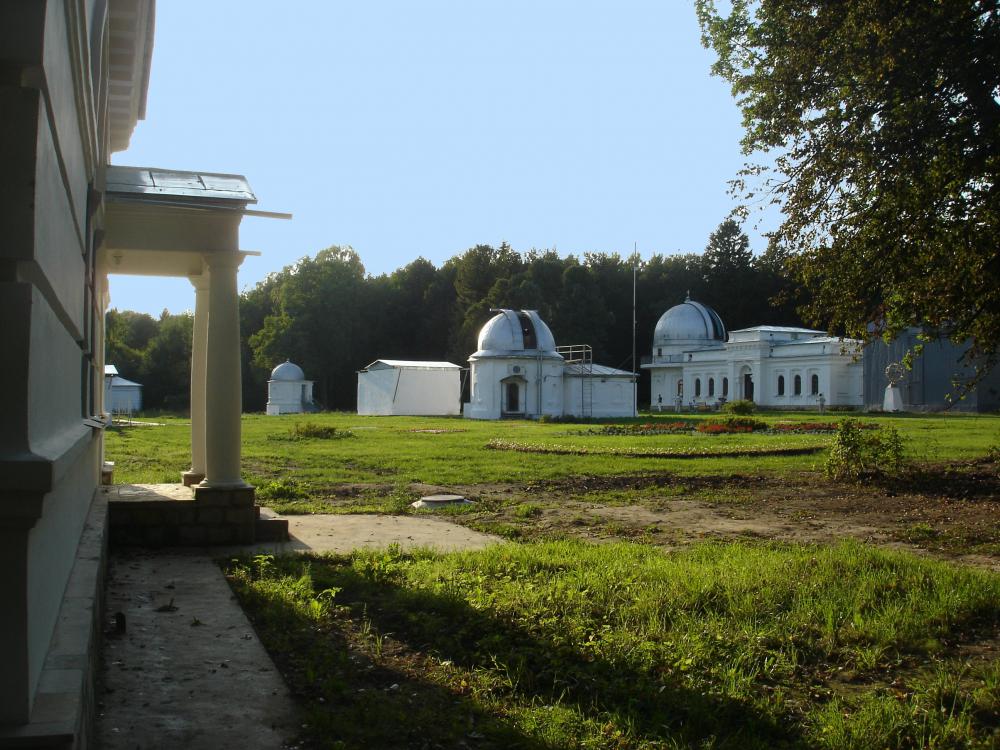
Fig. 1. Engelhardt Astronomical Observatory (EAO), Kazan (1901), Astronomy Park - from left: Heliometer, Maksutov, AZT-14, and 31cm-Grubb, seen from Library building (Photo: G. Wolfschmidt)
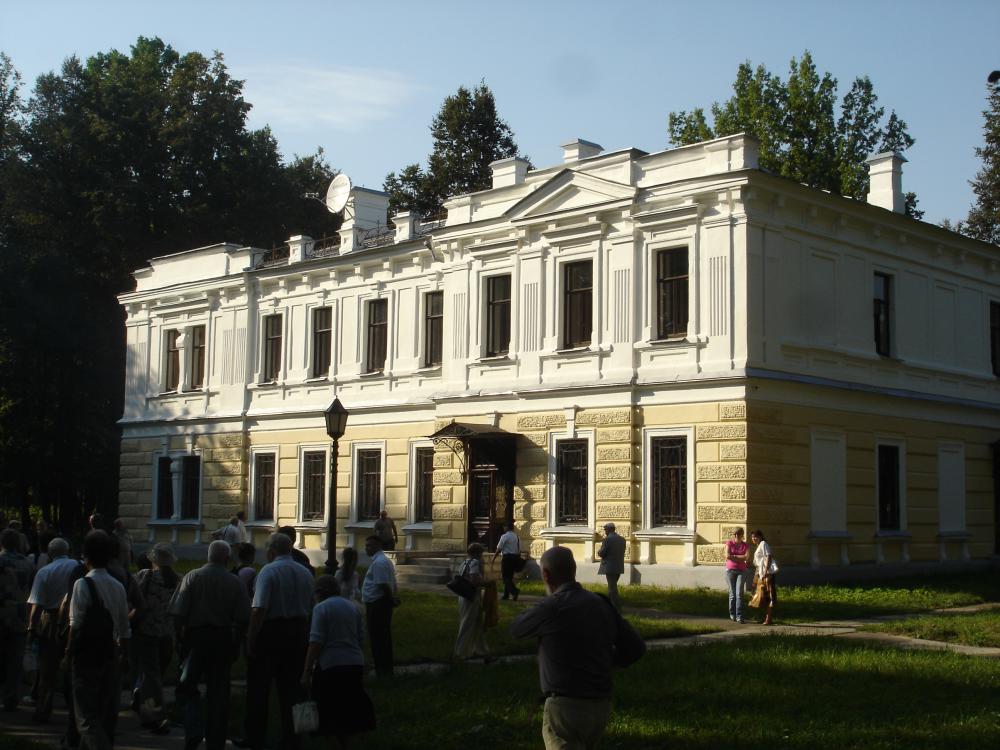
Fig. 2. Engelhardt Astronomical Observatory (EAO), Kazan (1901), Main building (Photo: G. Wolfschmidt)
The Engelhardt Astronomical Observatory (EAO) was built by N.F. Malinovsky (....) in Neoclassical style, 1898 to 1901, in the time, when Dmitry Ivanovich Dubyago [Dmitri Iwanowitsch Dubjago] (1849--1918) was Rector of Kazan University since 1884.
The instruments were donated in 1897 by Basilius [Vasily] von Engelhardt (1828--1915), which he had used in his Dresden Observatory.
The new Kazan Observatory is a nice ensemble in an astronomy park (21 ha) in the Krasnogorsk-Turinsky forest at a distance of 1-2 km from Lavrentievo Station of the Moscow-Kazan Railway. EAO Kazan has a rich collection of instruments and buildings: A two-story Administration building (1899--1901) with a former meteorological station located in the south of the building, Library Building with columns (1930), Observatory Building (40m long) with Grubb Refractor Tower (1899--1901) and Meridian Circle Building (7m high) -- built according to the design of Professor W. Schleier from galvanized corrugated iron, two Azimuth marks (Mire), Heliometer Building (1908), and newer buildings after WWII: Meteor department (1950), AZT-14 (1950).
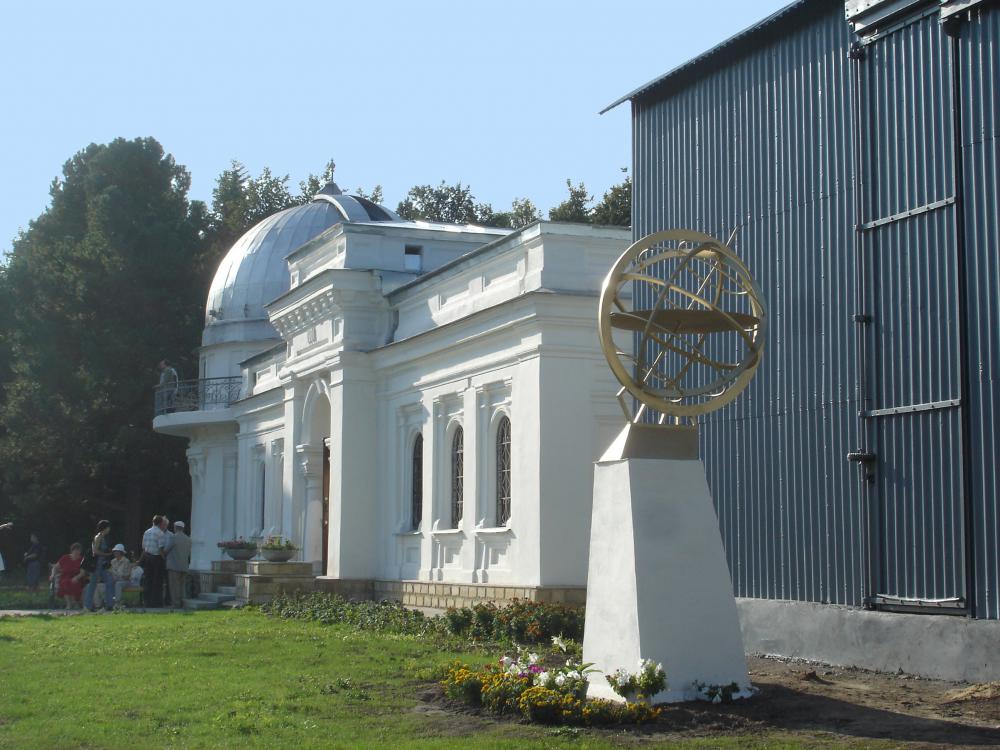
Fig. 3. Engelhardt Astronomical Observatory (EAO), Kazan (1901), Meridian Circle, main building and Dome for the Grubb Refractor (Photo: G. Wolfschmidt)
The transition from classical astronomy to modern astrophysics can be seen in the architecture and instrumentation. The main topixs of research were astrometry, lunar studies, celestial mechanics, and astrophysical studies.
Beginning of Astrophysics:
- Solar Eclipses (8. April 1896, 1912, 1914)
- EAO Kazan Variable Star Conference (1932)
- Kazan Solar Eclipse Expeditions (1933, 1936 and 1941)
Time signal, 1933
- The glass plate collection counts about 50,000 photographic plates.
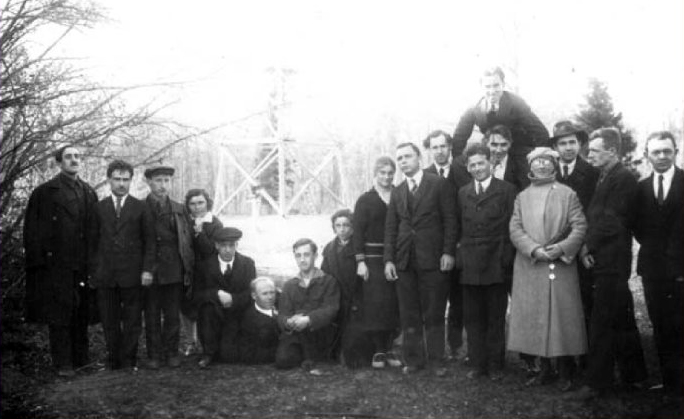
Fig. 4a. EAO Kazan, Variable Star Conference (1932) (EAO Kazan)
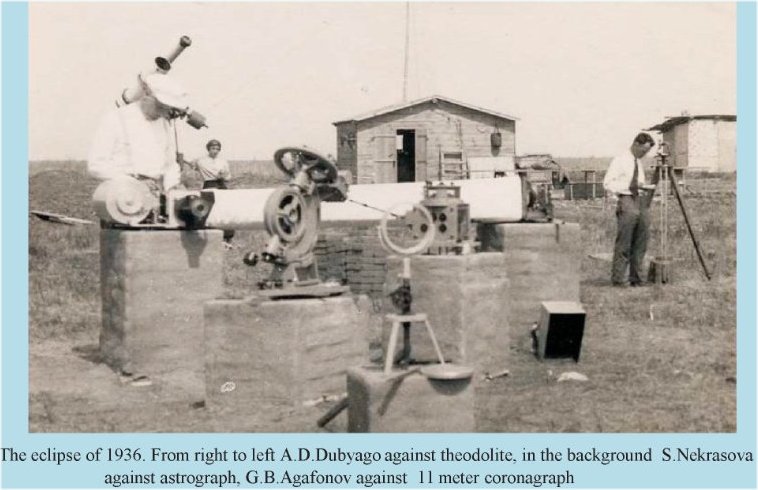
Fig. 4b. EAO Kazan, Solar Eclipse Expedition (1936) (EAO Kazan)
History - InfoTheme: Astronomy from the Renaissance to the mid-twentieth century
Entity: 158
Subentity: 1
Version: 22
Status: PUB
Date: 2021-04-08 12:35:28
Author(s): Gudrun Wolfschmidt
Basilius von Engelhardt -- Wassilij Pawlowitsch Engelhardt (1828 --1915), Vasily Pavlovich Engelhardt, had an observatory in Dresden, in 1877--1879 in Leubnitzer Strasse 2 and in 1879--1897 in Liebigstrasse 1.
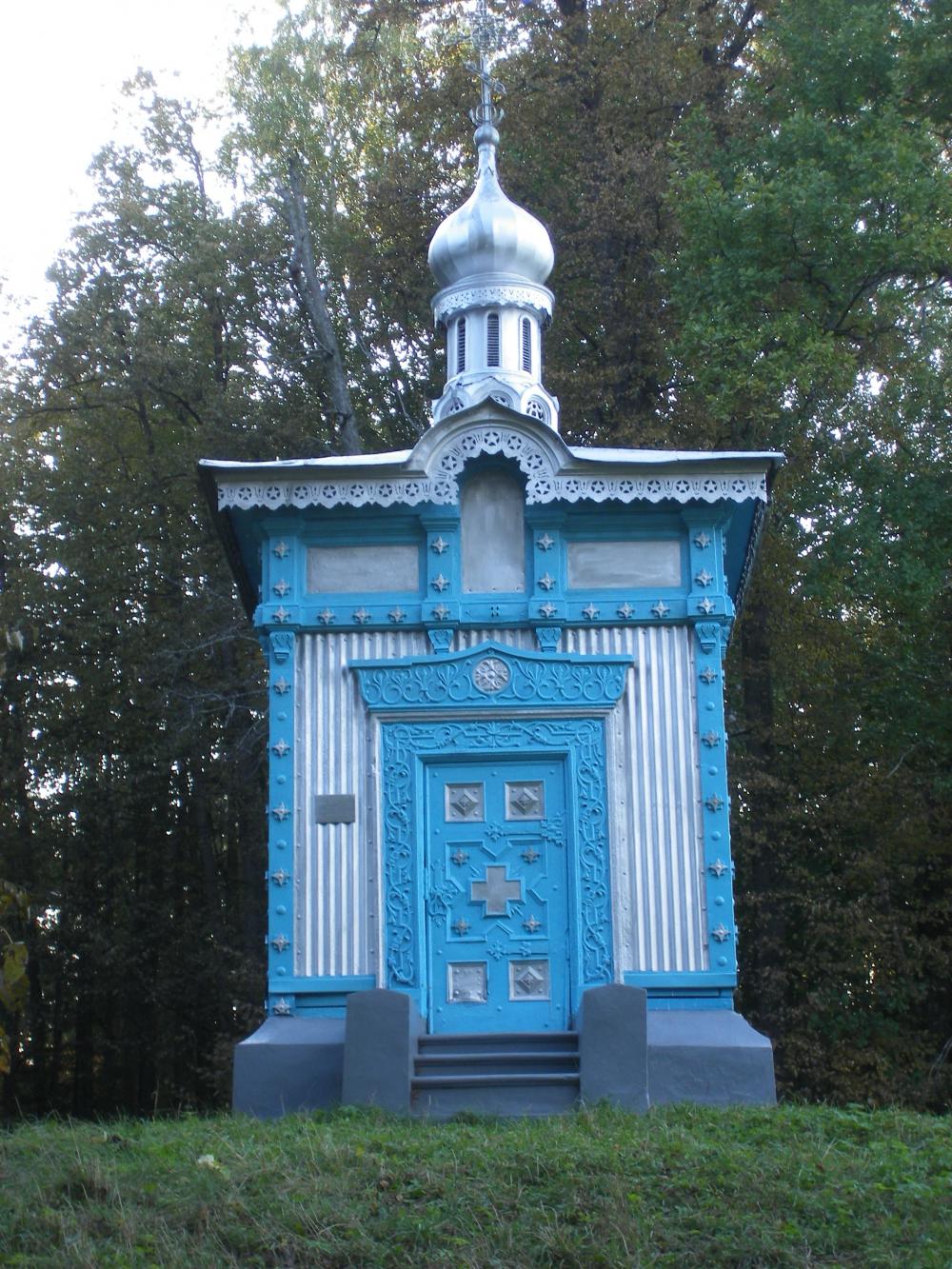
Fig. 5a. EAO Kazan, Southern Azimuth mark (Photo: G. Wolfschmidt)
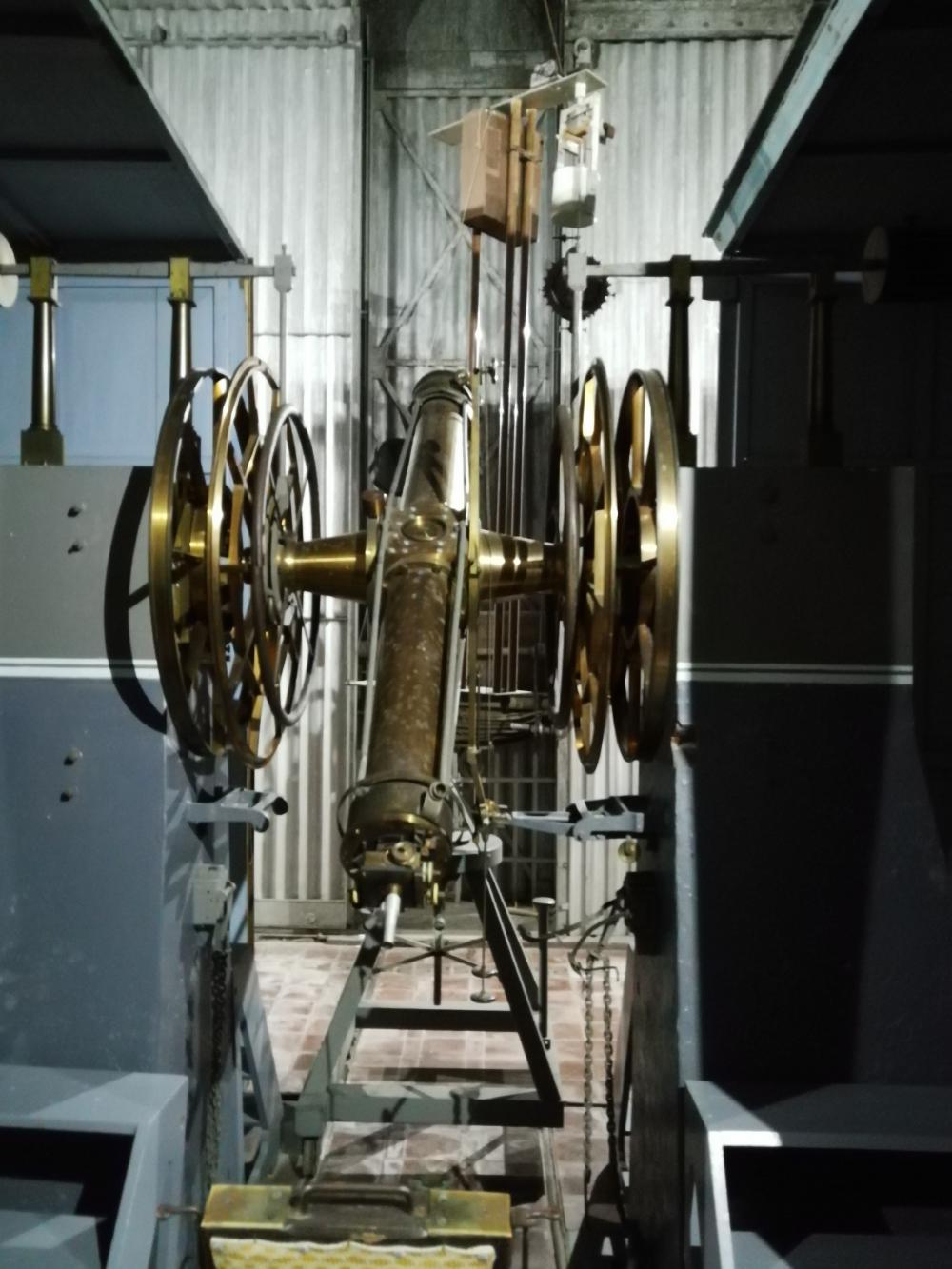
Fig. 5b. EAO Kazan, Meridian Circle (Photo: G. Wolfschmidt)
Instrumentation for Classical Astronomy
- 13.5-cm-Meridian Circle (f=195cm), Adolf & Georg Repsold of Hamburg (1845), 1920/23 the meridian circle was restored, and in 1924, the mercury horizon was added.
The columns supporting the instrument are 2m above the hall floor and insulated from the rest of the foundation and the floor with glycerin.
- Northern (iron pavilion) and Southern azimuth mark for the Meridian Circle can be found in a distance of 130-m from the center of the Mercury horizon.
The Southern azimuth mark on a small hill of 5.5m is in addition a burial vault, a crypt for V.P. Engelhardt and Director D.I. Dubyago, a unique architectural construction as a small chapel in the Byzantine style, decorated with stars and signs of zodiac. There is a crypt in the pavilion’s basis for two persons who intended to be V.P. Engelhardt and past Director D.I. Dubjago.
- 68-mm-Transit instrument, Carl Bamberg of Berlin,
(broken-axis type), Ocular micrometer - Universal instrument, made by Otto Fennel of Kassel
- Three Chronometers and an astronomical Pendulum Clock, Knoblich of Hamburg with compensation for temperature and air pressure
- Pendulum Clock, Tiede of Berlin, connected electrically to a Chronograph made by Fuess of Berlin
- Heliometer, A. Repsold & Sons of Hamburg (1874),
new location in 1908 in the specially constructed round pavilion of 3.6-m in diameter - still operational!
- 6’’ equatorial and 4’’ small Comet Seeker, Merz of Munich, equatoreal mounting, made by Gustav Heyde of Dresden.
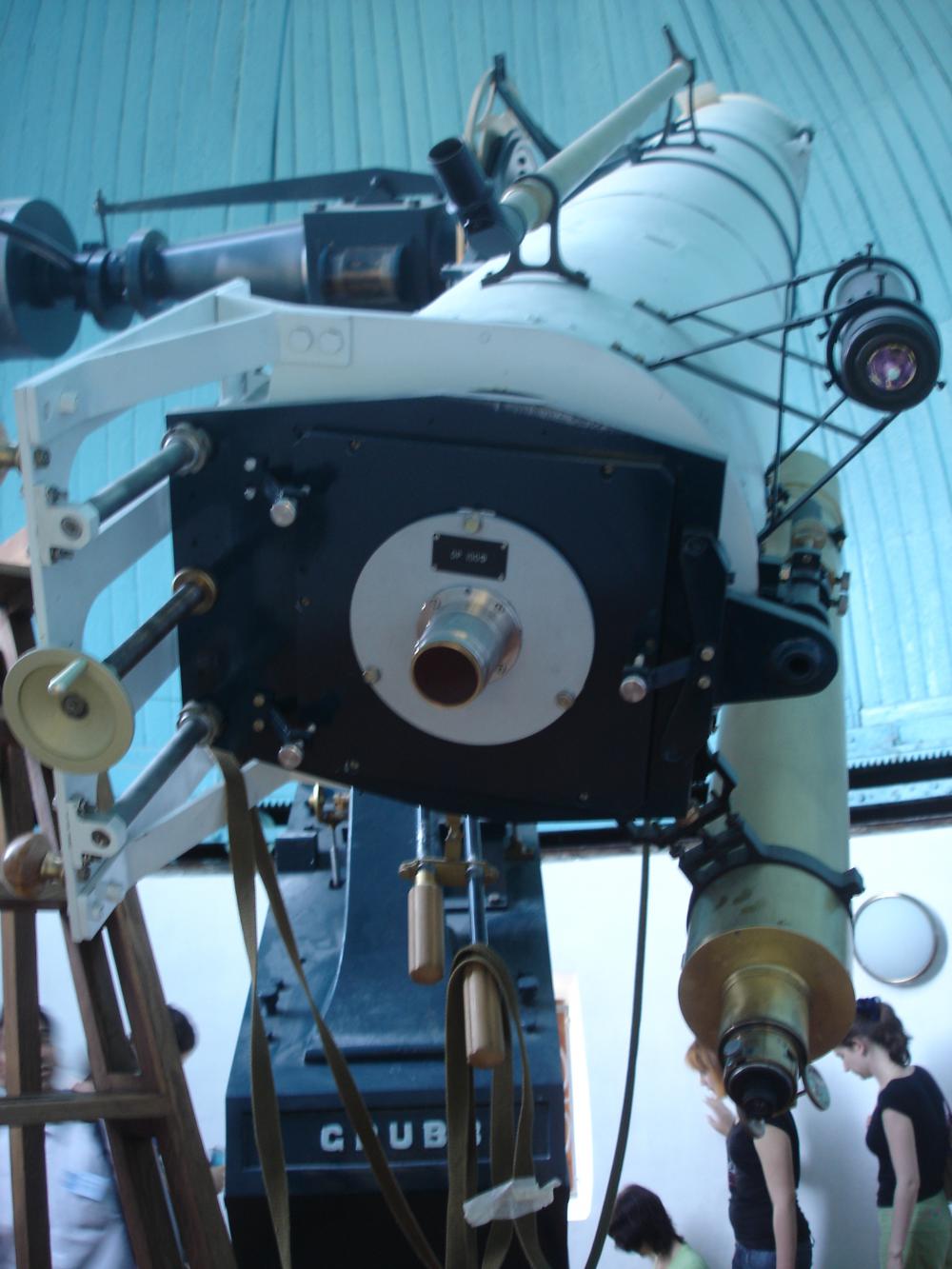
Fig. 6a. EAO Kazan, 31-cm-Refractor, Grubb of Dublin (Photo: G. Wolfschmidt)
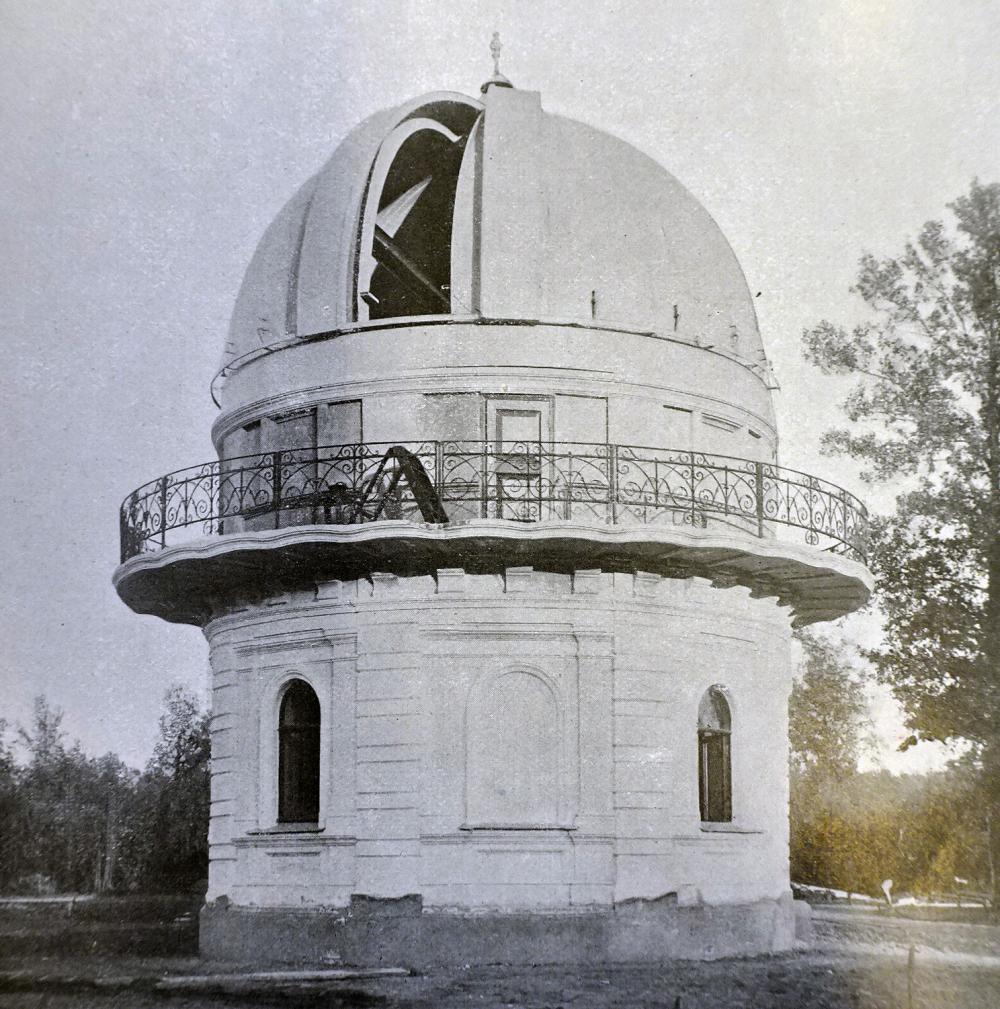
Fig. 6b. EAO Kazan, Dome of the 31-cm-Grubb (historical photo, EAO Kazan)
Instrumentation for the Beginning of Astrophysics
- 20cm = 8" Equatorial Telescope, Howard Grubb of Dublin, 1875
- 31cm = 12" Equatorial Refractor Engelhardt (focal length 4-m), Howard Grubb of Dublin (1879) --
second largest in Germany after Strassburg Observatory, -- installed in Kazan in a dome of the inner 6-m-diameter,
with clock drive, with an illuminated position micrometer, Repsold, Hamburg.
The 11-m-high-tower is surrounded by a small balcony with a fine cast-iron guard railing.
The basis column as fundament for the refractor extends 3m deep into the ground
and is laid out separately from the walls of the tower. - Seeker of the Equatorial, optics: Reinfelder & Hertel of Munich,
with an objective of 136mm aperture, mounting: Gustav Heyde of Dresden.
- 12cm Astrograph, Gustav Heyde of Dresden, with objective prism
- Ocular spectroscope according to Herrmann Carl Vogel of Potsdam
- Universal spectroscope, Merz of Munich, with four prism systems à vision directe
- 9cm Zenith telescope, Carl Bamberg of Berlin
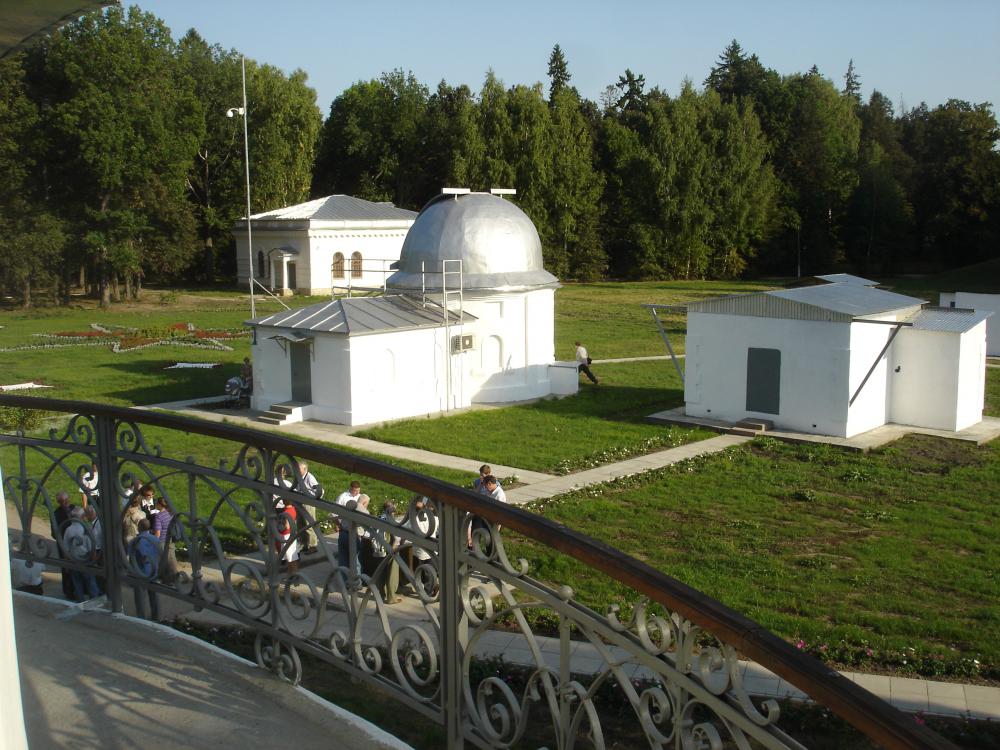
Fig. 6a. EAO Kazan, AZT-14 dome and Library (left), seen from balcony of Grubb dome (Photo: G. Wolfschmidt)
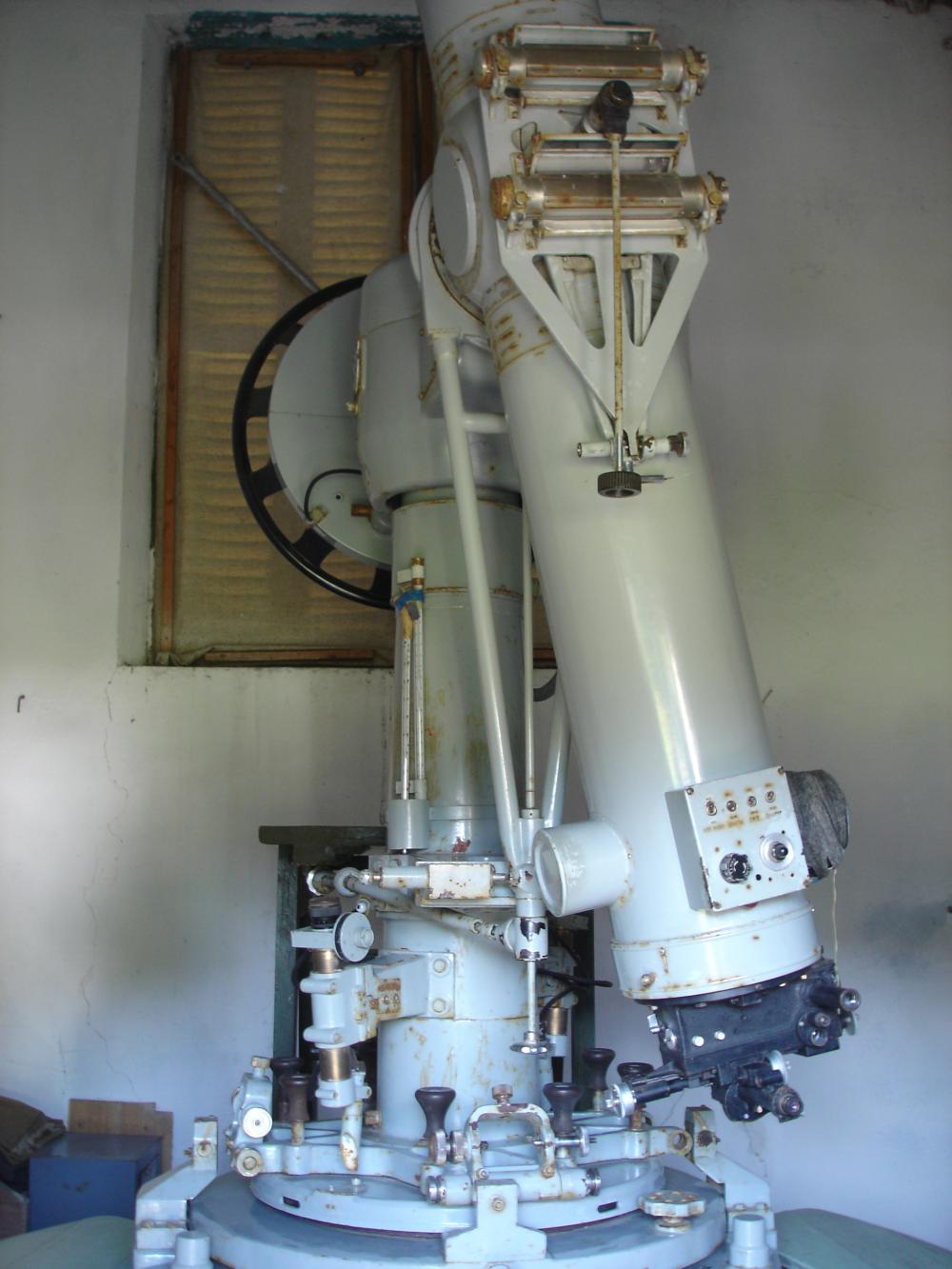
Fig. 6b. EAO Kazan, Zenith Telescope (Photo: G. Wolfschmidt)
Contemporary Instruments (after WWII), United Arab Emirates
- Zenith telescope ZTL-180 (D = 18cm, f = 2.36m), 1946
- 20cm-Astrograph AFR-18 (f = 2m)
Another astrograph was acquired in 1914 [Nefediev 2019, p. 38].
- Geide telescope in Pavilion
- 35cm-Meniscal telescope of Maksutov system AST-452 (D = 35cm, f = 1.2m),
manufactured in Kazan by the Optical and Mechanical Plant in Derbyshki (1963)
- AZT-14 telescope (1950) in a dome building, modified -- now:
48cm-Refractor AFR, equipped with CCD (D = 48cm, f = 7.72m)
- 20-inch wide angle astrograph reflector for observation of deep space (Astrograph Widefield Reflector)
- 8-inch Fluorit (CaF2) triple apochromatic reflector with a diaphragm number f/7.5 to study the solar system
- two solar telescopes of 110 and 130mm
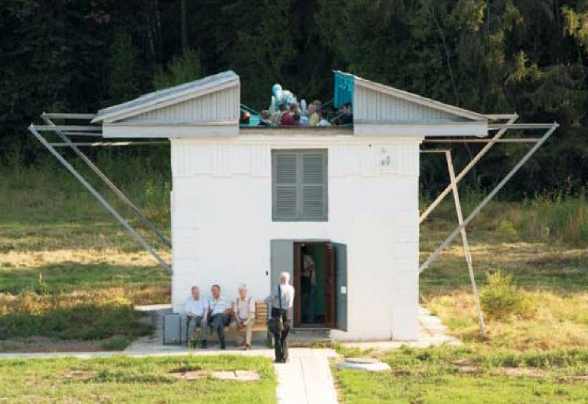
Fig. 7a. EAO Kazan, Maksutov building (Photo: G. Wolfschmidt)
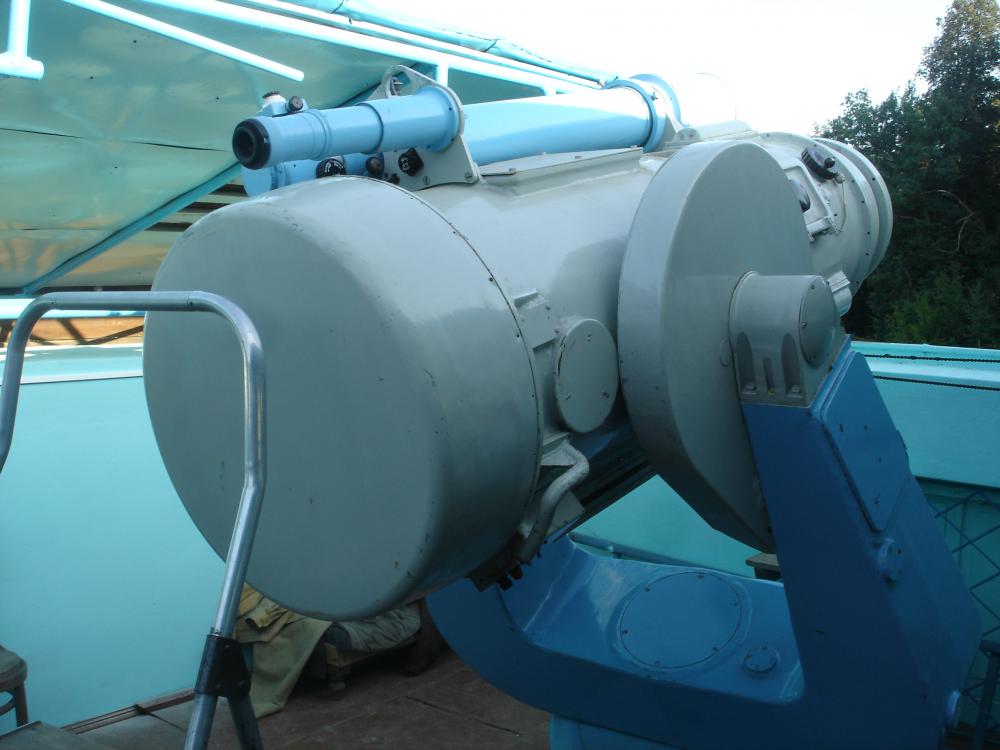
Fig. 7b. EAO Kazan, Maksutov Telescope (Photo: G. Wolfschmidt)
Directors of EAO
- D.I.Dubjago -- 1901 to 1918;
- M.A. Grachev -- 1918 to 1925;
- A.A. Yakovkin -- 1925 to 1931;
- D.Ya. Martunov -- 1931 to 1956;
- A.D. Dubjago -- 1956 to 1958;
- A.A.Nefed’ev -- 1958 to 1976;
- O.I. Belkovich -- 1976 to 1991;
- N.G. Rizvanov -- 02.1991 to 11.1991;
- N.A. Sakhibullin -- 1991 to 2008;
- Yu.A. Nefed’ev -- since 2008.
State of preservation - InfoTheme: Astronomy from the Renaissance to the mid-twentieth century
Entity: 158
Subentity: 1
Version: 4
Status: PUB
Date: 2021-04-08 01:31:33
Author(s): Gudrun Wolfschmidt
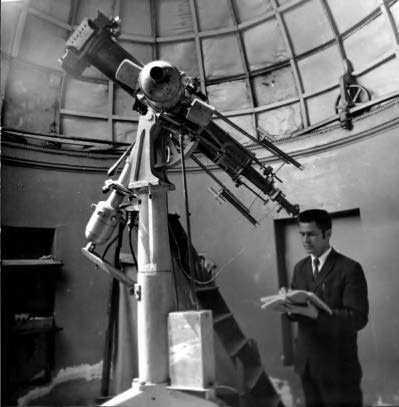
Fig. 8a. EAO Kazan, Heliometer, A. Repsold & Sons of Hamburg (1874) (© EAO Kazan)
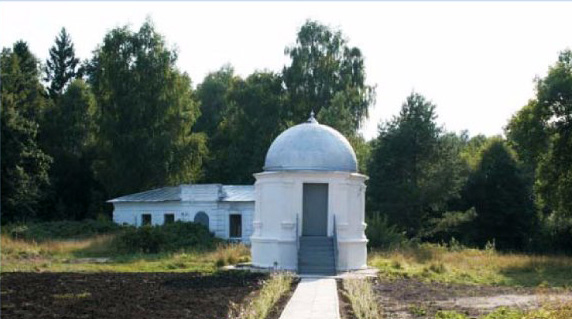
Fig. 8b. EAO Kazan, Heliometer 3.6-m-pavilion (1908) (© EAO Kazan)
The domes and pavilions with the historical instruments as well as the main building and library in the astronomy park are in good condition. Especially remarkable are the large dome with the Grubb refractor (1879), the Heliometer pavilion, and the Southern azimuth mark with the burial vault in the Byzantine style.
A planetarium (2013) and an astronomical museum for public outreach was established. The Observatory is the unique scientific-educational and cultural-cognitive astronomical center.
Comparison with related/similar sites - InfoTheme: Astronomy from the Renaissance to the mid-twentieth century
Entity: 158
Subentity: 1
Version: 9
Status: PUB
Date: 2022-04-16 14:49:42
Author(s): Gudrun Wolfschmidt
The EAO Kazan started as private observatory of Basilius von Engelhardt in Dresden, like Hamburg first observatory in 1802 founded by Johann Georg Repsold, the the Hamburg Millerntor Observatory in 1825, and like Konkoly Observatory (1871/74), first in O’Gyalla, Hungary, today Hurbanovo, Slovakia), then Konkoly Observatory in Budapest (1899/1924).
Tangible, non-moveable instruments:
Repsold meridian circles you can find in many observatories in the world, also in La Plata (Gautier, 1880s, and Repsold, 19cm, 1906), Hamburg-Bergedorf, EAO Kazan (1845, 1923 restored), cf. Strasbourg (35cm Repsold, 1876), Tartu, Estonia, Pulkovo, Russia, Rio, Brazil, Naval Observatory Washington D.C., etc.
Large refractors: EAO Kazan 31cm Refractor, Grubb of Dublin (1879), Strasbourg 50cm Repsold (1880), the largest in the German Empire and in Europe, La Plata 43cm Gautier, Henry (1890), Hamburg-Bergedorf 60cm Double Refractor, Repsold & Steinheil (1911), Bosscha, Lembang, Indonesia 60cm Zeiss Double Refractor (1926) -- cf. 100cm Yerkes refractor (1897), the largest in the world.
Kazan has only a small 12-cm-Astrograph, Gustav Heyde of Dresden, in its original instrumentation around 1900, La Plata has a 34cm-Zeiss Astrograph (1913), Hamburg-Bergedorf Observatory has the Zeiss Lippert Astrograph (Triplet L 34/340cm) with Objective Lens Prism combined with the Zeiss Double Astrograph, Triplet K (30/150cm and Petzval 30/150cm, (1912/14) with two 23-cm- and 20-cm-guiding telescopes on one mounting, and in addition, the Zeiss AG Zone Astrograph (1924), and Bosscha, Lembang has an Astrograph, made by Carl Bamberg of Berlin (1920s), and an Astrograph with two Zeiss cameras.
Kazan and Bosscha Observatory, Indonesia, have no reflector in their original instrumentation around 1900, La Plata has the 80-cm-Reflector, Gautier (1882), later replaced by a Zeiss mirror, Hamburg-Bergedorf has the remarkable 1-m-Zeiss-Reflector (1911, 3m focal length, Newton with extremely high focal ratio 1:3, now Nasmyth focus), the largest in Europe, and the third largest in the world at that time (Mount Wilson: 1.52m, Lowell-Obs. Flagstaff: 1.07m) -- the prototype for Europe: Zeiss 1-m-Reflector, Uccle, Brussels (1913), Merate Astronomical Observatory near Como (Milan-Brera) (1926), Zeiss 1.22-m-Newtonian-Cassegrain-Reflector, Berlin-Babelsberg (1924, since 1945 Simeiz, Crimea).
In Hamburg-Bergedorf Observatory, the Schmidt telescope was invented in 1930, the original Schmidt telescope still exists, the Large 80/120-cm-Schmidt, Carl Zeiss of Jena (1954, since 1976 in Calar Alto, Spain), Bosscha Observatory, Indonesia 51/71-cm-Schmidt (1958), Uccle, Brussels 84/120-cm-Schmidt (1958). EAO Kazan has a small 38/52-cm-Schmidt-Maksutov AST-452 (1963), also useful for wide field astrophotography.
In all observatories, mentioned here, there is a considerable amount of instruments of German makers.
Astronomy Park
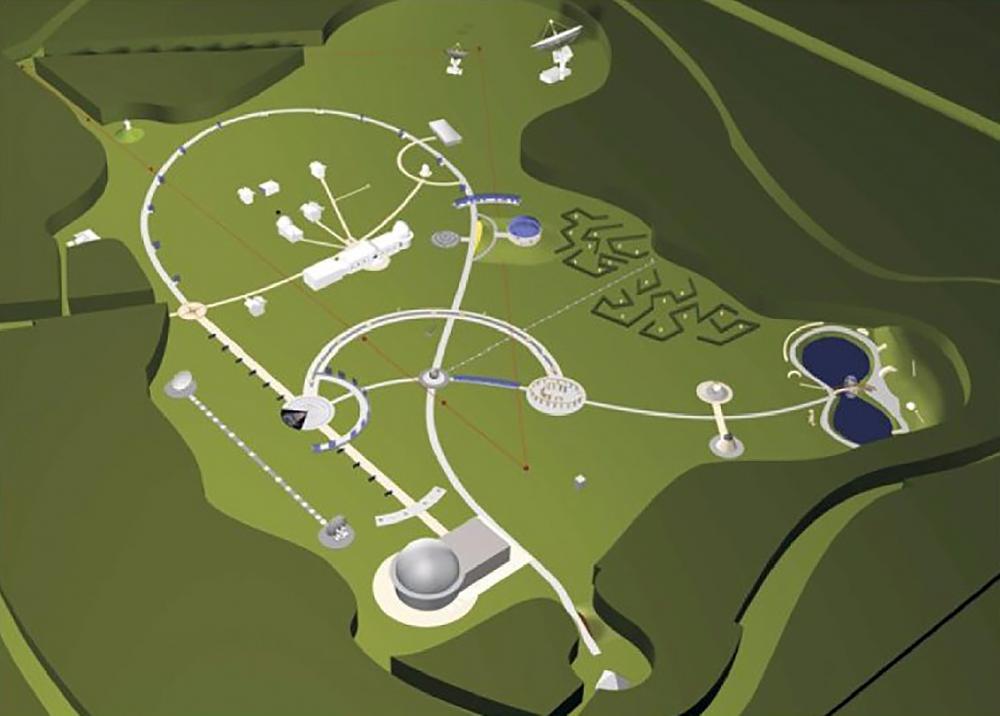
Fig. 9. EAO Kazan, Astronomy Park (Photo: G. Wolfschmidt)
In the Astronomy Park, you find the Main Observatory Building with the Grubb dome, the astronomical museum, and the meridian circle, then the dome of the AZT-14, Geide telescope pavilion, small nice Heliometer dome, Sundial, Meniscal telescope pavilion, Solar telescope pavilion, Meteor department building, and the Planetarium.
Kazan EAO Observatory is an ensemble in an astronomy park (1901) [21 ha] like the Observatoire de Strasbourg (1881), Remeis Observatory Bamberg (1889), Nice Observatory, France (1888), La Plata Observatory, Argentina (1886) [7 ha area with 18 buildings, including domes], Heidelberg (1898), Washington, D.C. (1887), Uccle, Bruxelles, Belgium (1891), Hamburg-Bergedorf Observatory, Germany (1906/12), and Bosscha Observatory, Lembang, Java, Indonesia (1923).
The park of Kazan has rare trees involving hundred-year-old unique cedars and oaks, camomile glades and buildings organically entered in its landscape and pavilions.
Threats or potential threats - InfoTheme: Astronomy from the Renaissance to the mid-twentieth century
Entity: 158
Subentity: 1
Version: 2
Status: PUB
Date: 2021-03-08 05:45:41
Author(s): Gudrun Wolfschmidt
no threats
Present use - InfoTheme: Astronomy from the Renaissance to the mid-twentieth century
Entity: 158
Subentity: 1
Version: 5
Status: PUB
Date: 2021-04-02 15:58:15
Author(s): Gudrun Wolfschmidt
Still in use as Engelhardt Astronomical Observatory (EAO) of Kazan Federal University (KFU).
The following research is carried out in EAO: coordinate-time problems of astronomy and geodesy, determination of exact positions of stars and compiling star positions catalogues, study and specification of figures and orbits of Solar system bodies, definition of galactic parameters, astronomical instruments, and history of astronomy.
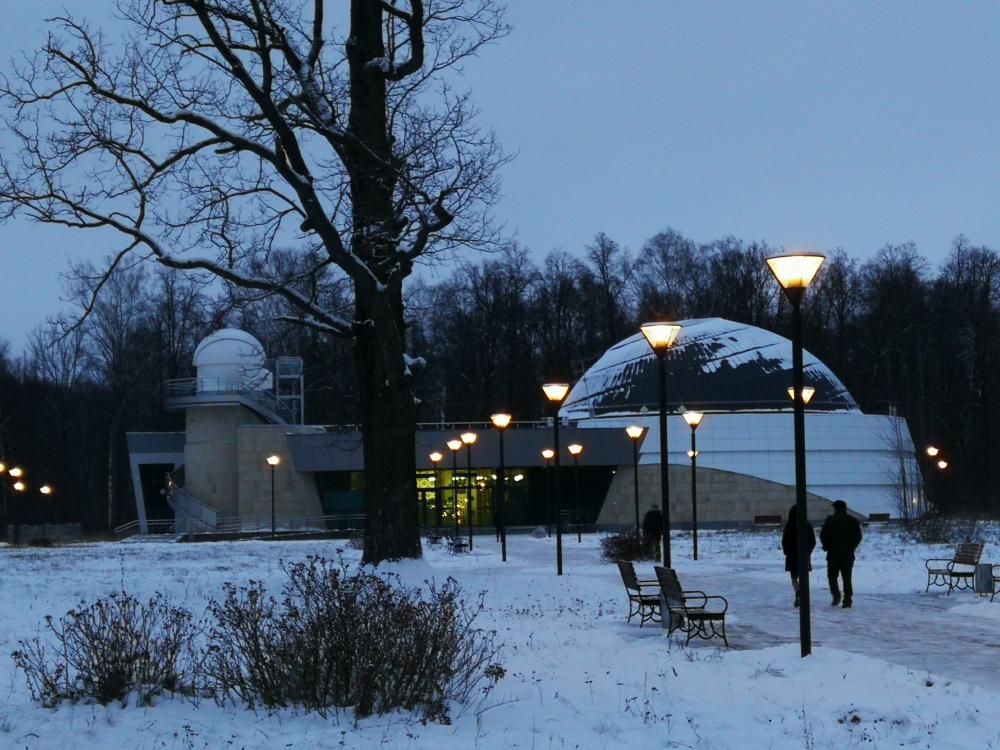
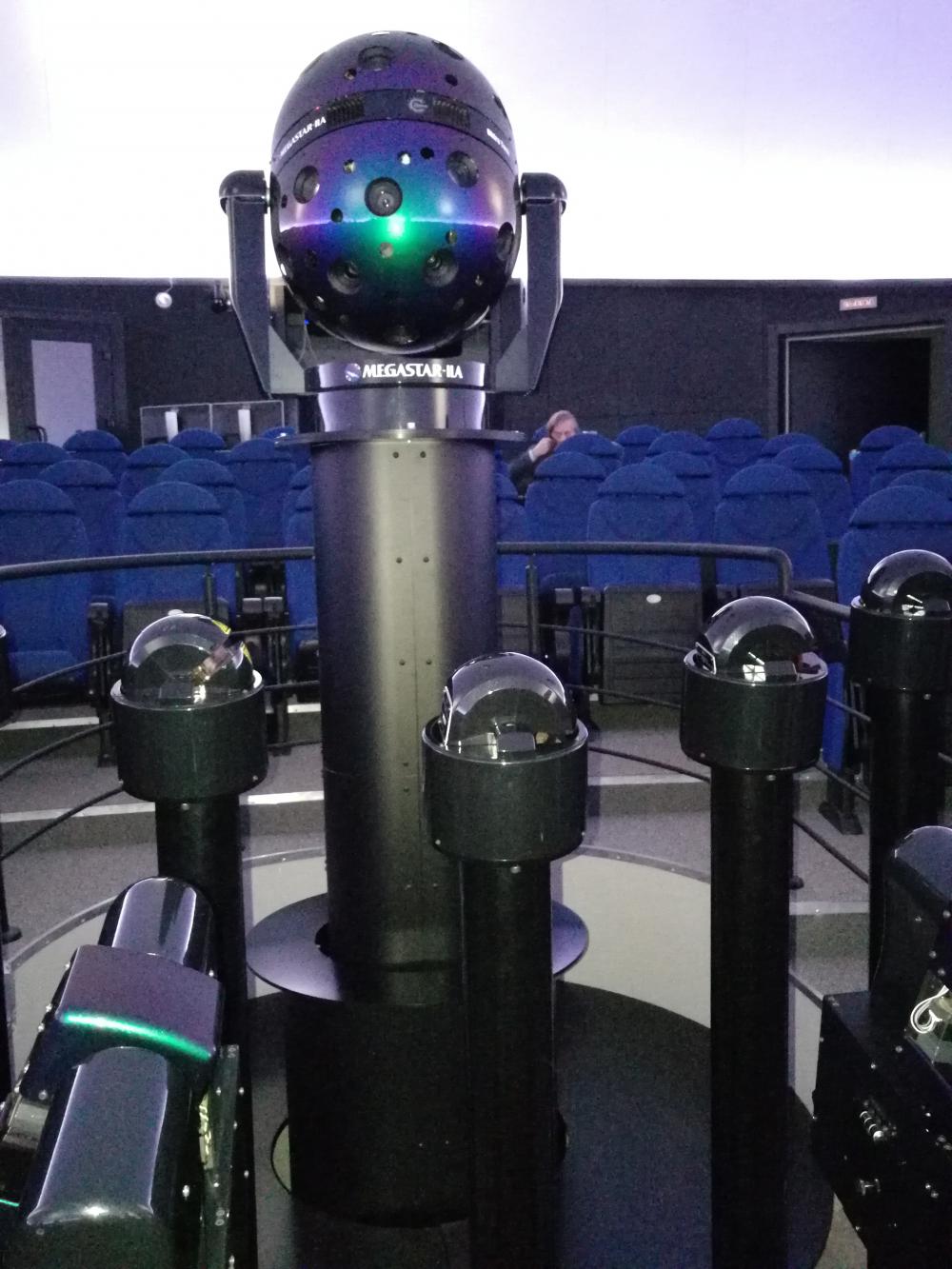
Fig. 9. Engelhardt Astronomical Observatory (EAO), Kazan, Planetarium (2013) (Photo: G. Wolfschmidt)
In addition there is an astronomical museum in the main Observatory Building (between the Grubb Refractor and the Meridian Circle) and a modern educational and cultural campus "Planetarium of Kazan Federal University and Astronomical Park" (2013) for popularizing astronomy for school children and for the public audience.
Astronomical relevance today - InfoTheme: Astronomy from the Renaissance to the mid-twentieth century
Entity: 158
Subentity: 1
Version: 4
Status: PUB
Date: 2021-04-02 16:04:45
Author(s): Gudrun Wolfschmidt
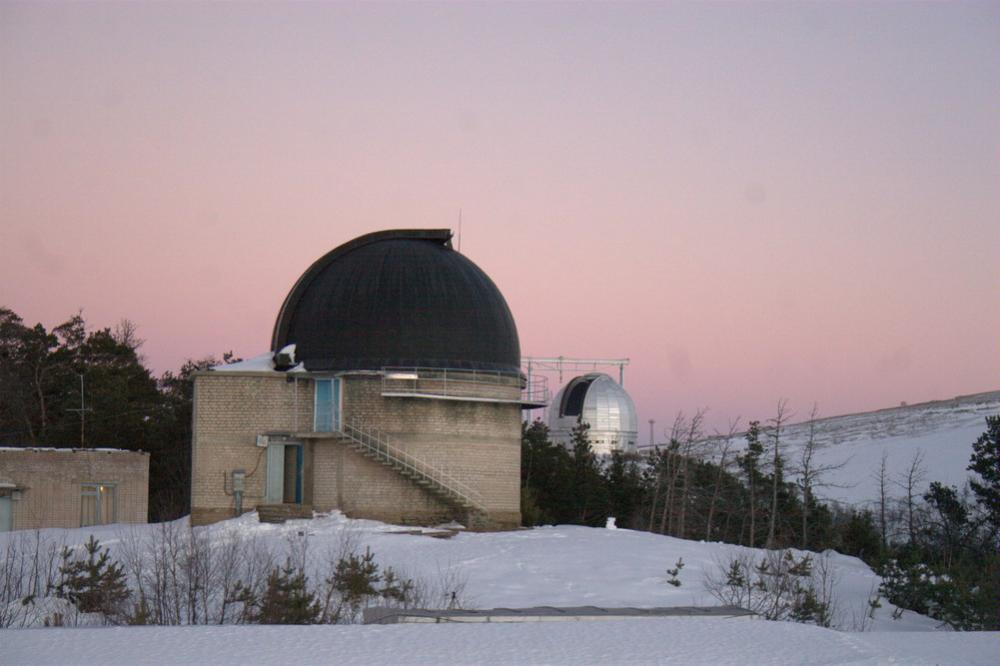
Fig. 10. Zelenchukskaya Station (2047m) in the North Caucasus (Wikipedia 3, S. Korotkiy)
The Engelhardt Astronomical Observatory of Kazan University has good new locations for observation:
- Zelenchukskaya Station (observatory code 114), located at 2047m altitude near Zelenchukskaya in the North Caucasus region of the Caucasus Mountains, using a 0.3-m-reflector (f/7.7). Several minor planets were discovered there and comets observed.
- In addition, the Special Astrophysical Observatory (observatory code 115) of the Russian Academy of Science (SAO RAS) (1966) should be mentioned, also in the Caucasus Mountains (2070m), equipped with the 6-m-Bolshoi Teleskop Altazimutalny, BTA-6 (1975), Large Altazimuth Telescope, in a 48-m-diameter dome. The 6-m (borosilicate massive mirror of 42 tons) was the world’s largest single primary mirror optical reflecting telescope until 1993, when the Keck 1 telescope, Hawaii, was inaugurated.
In addition the SAO has a 1-m-Zeiss-Reflecting Telescope (Zeiss-1000) in a large cylindrical building (1990/93), and a 60-cm-Reflector, Carl Zeiss of Jena (1994), the latter belongs to Kazan State University.
The RATAN-600 radio telescope (transit telescope) with rectangular radio reflectors in a 576m diameter circle is nearby at an altitude of 970m.
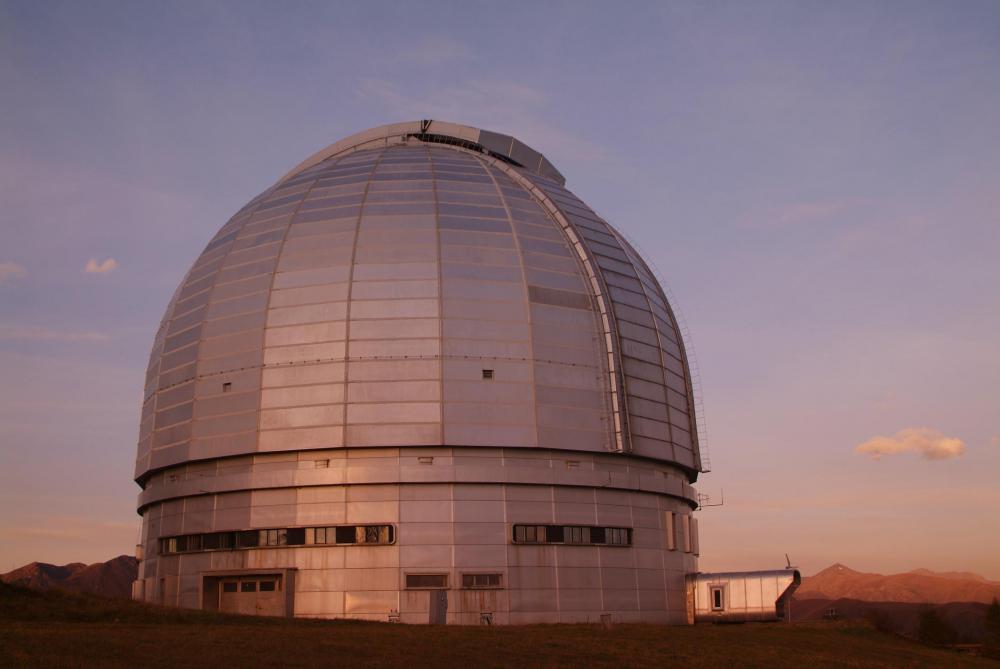
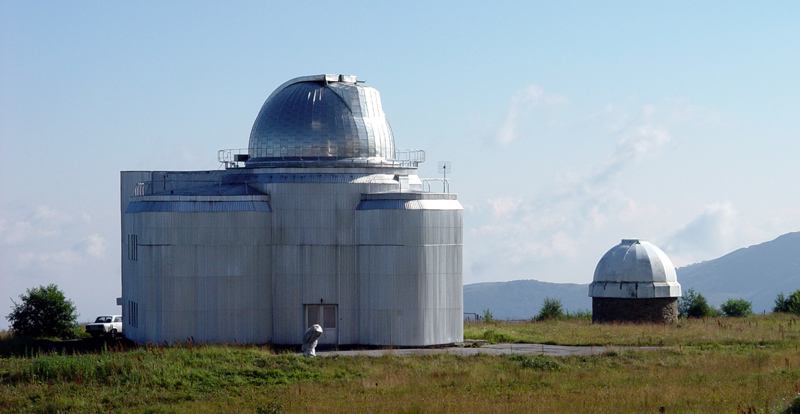
Fig. 11a,b. Special Astrophysical Observatory (SAO RAS), dome of BTA-6 (1975) and 1-m- and 60-cm-Reflecting Telescopes, Carl Zeiss of Jena (1990/93 and 1994) (Wikipedia 3, Tyavin Paul, Wikipedia, Mariluna)
References
Bibliography (books and published articles) - InfoTheme: Astronomy from the Renaissance to the mid-twentieth century
Entity: 158
Subentity: 1
Version: 3
Status: PUB
Date: 2021-04-02 16:05:33
Author(s): Gudrun Wolfschmidt
- Ioannisiani, BK; Neplokhov, EM; Kopylov, IM; Rylov, VS; Snezhko, LI: "The Zelenchuk 6M telescope (BTA) of the USSR Academy of Sciences." ASSL Vol. 92, IAU Colloquium 67, Vol. 92 (1982), p. 3--10.
Bibcode:1982ASSL...92....3I. doi:10.1007/978-94-009-7787-7_1
- Nefediev Y.A.: Kazan Observatory as Astronomical Heritage. In: Astronomy and World Heritage: Across Time and Continents, ed. Mikhail Ya. Marov. Kazan: Publishing House of Kazan University 2015, p. 225-231.
- Nefediev, Y.A.; Sakhibullin, N.A.; Bikmaev, I.F. & A.O. Andreev: Astronomical Researches and Space Heritage in Kazan University. Kazan: Kazan University Press 2019.
- Wolfschmidt, Gudrun: Heritage of Astronomical Observatories in the context of the Thematic Initiative on Heritage of "Astronomy, Science and Technology". In: Proceedings of the Conference in Kazan (Dez. 2019). "Historical, Cultural and Scientific Heritage of Astronomical Observatories: Formation of the Outstanding Universal Value of Sites". Heritage and Modern Times (Nasledie i sovremennost), Vol. 3, No 3 (2020), p. 17--29,
https://nasledie.elpub.ru/jour/article/view/43/43.
Links to external sites - InfoTheme: Astronomy from the Renaissance to the mid-twentieth century
Entity: 158
Subentity: 1
Version: 4
Status: PUB
Date: 2021-08-06 22:49:03
Author(s): Gudrun Wolfschmidt
- EAO Kazan (Wikipedia)
- International Forum for the Preservation of the historical and cultural heritage and the development of the Unesco World Heritage Sites in the Republic of Tartastan
- Mintimer Shaimiev: "Astronomy is not sufficiently represented in the UNESCO World Heritage List"
- UNESCO-World Heritage: High ranking visit from Kazan University
- UNESCO Tentative Lists, Astronomical Observatories of Kazan Federal University
- University observatories added to Tentative Lists of UNESCO World Heritage
- List of World Heritage Sites in Russia, in addition tentative list:, Astronomische Observatorien der Kasaner Föderalen Universität, No. 6494 (2020).
- SAO homepage.
Links to external on-line pictures - InfoTheme: Astronomy from the Renaissance to the mid-twentieth century
Entity: 158
Subentity: 1
Version: 1
Status: PUB
Date: 2020-01-08 02:53:31
Author(s): Gudrun Wolfschmidt
no information available
PrintPrint contents of 'Description' tab
(opens in a new window) Theme
Astronomy from the Renaissance to the mid-twentieth century
Case Study Navigation
- InfoTheme: Astronomy from the Renaissance to the mid-twentieth century
Entity: 158
Subentity: 1
Version: 4
Status: PUB
Date: 2021-04-02 16:02:15
Author(s): Gudrun Wolfschmidt
Kazan, Tartastan, Russia: New Observatory (1901):
Engelhardt Astronomical Observatory (EAO) of Kazan Federal University (KFU),
(25 km from the centre of Kazan in a forest)
See also:
Old Observatory of Kazan Federal University (KFU) (founded in 1810, built 1837), Kremlin Str. 18
Location - InfoTheme: Astronomy from the Renaissance to the mid-twentieth century
Entity: 158
Subentity: 1
Version: 4
Status: PUB
Date: 2021-04-08 01:22:57
Author(s): Gudrun Wolfschmidt
55°50’23’’ N 48°48’’45’’ E, Elevation 64m above mean sea level and above the Volga River 55m.
IAU observatory code - InfoTheme: Astronomy from the Renaissance to the mid-twentieth century
Entity: 158
Subentity: 1
Version: 1
Status: PUB
Date: 2020-01-08 02:53:31
Author(s): Gudrun Wolfschmidt
136
Description of (scientific/cultural/natural) heritage - InfoTheme: Astronomy from the Renaissance to the mid-twentieth century
Entity: 158
Subentity: 1
Version: 5
Status: PUB
Date: 2021-04-08 01:24:02
Author(s): Gudrun Wolfschmidt

Fig. 1. Engelhardt Astronomical Observatory (EAO), Kazan (1901), Astronomy Park - from left: Heliometer, Maksutov, AZT-14, and 31cm-Grubb, seen from Library building (Photo: G. Wolfschmidt)

Fig. 2. Engelhardt Astronomical Observatory (EAO), Kazan (1901), Main building (Photo: G. Wolfschmidt)
The Engelhardt Astronomical Observatory (EAO) was built by N.F. Malinovsky (....) in Neoclassical style, 1898 to 1901, in the time, when Dmitry Ivanovich Dubyago [Dmitri Iwanowitsch Dubjago] (1849--1918) was Rector of Kazan University since 1884.
The instruments were donated in 1897 by Basilius [Vasily] von Engelhardt (1828--1915), which he had used in his Dresden Observatory.
The new Kazan Observatory is a nice ensemble in an astronomy park (21 ha) in the Krasnogorsk-Turinsky forest at a distance of 1-2 km from Lavrentievo Station of the Moscow-Kazan Railway. EAO Kazan has a rich collection of instruments and buildings: A two-story Administration building (1899--1901) with a former meteorological station located in the south of the building, Library Building with columns (1930), Observatory Building (40m long) with Grubb Refractor Tower (1899--1901) and Meridian Circle Building (7m high) -- built according to the design of Professor W. Schleier from galvanized corrugated iron, two Azimuth marks (Mire), Heliometer Building (1908), and newer buildings after WWII: Meteor department (1950), AZT-14 (1950).

Fig. 3. Engelhardt Astronomical Observatory (EAO), Kazan (1901), Meridian Circle, main building and Dome for the Grubb Refractor (Photo: G. Wolfschmidt)
The transition from classical astronomy to modern astrophysics can be seen in the architecture and instrumentation. The main topixs of research were astrometry, lunar studies, celestial mechanics, and astrophysical studies.
Beginning of Astrophysics:
- Solar Eclipses (8. April 1896, 1912, 1914)
- EAO Kazan Variable Star Conference (1932)
- Kazan Solar Eclipse Expeditions (1933, 1936 and 1941)
Time signal, 1933
- The glass plate collection counts about 50,000 photographic plates.

Fig. 4a. EAO Kazan, Variable Star Conference (1932) (EAO Kazan)

Fig. 4b. EAO Kazan, Solar Eclipse Expedition (1936) (EAO Kazan)
History - InfoTheme: Astronomy from the Renaissance to the mid-twentieth century
Entity: 158
Subentity: 1
Version: 22
Status: PUB
Date: 2021-04-08 12:35:28
Author(s): Gudrun Wolfschmidt
Basilius von Engelhardt -- Wassilij Pawlowitsch Engelhardt (1828 --1915), Vasily Pavlovich Engelhardt, had an observatory in Dresden, in 1877--1879 in Leubnitzer Strasse 2 and in 1879--1897 in Liebigstrasse 1.

Fig. 5a. EAO Kazan, Southern Azimuth mark (Photo: G. Wolfschmidt)

Fig. 5b. EAO Kazan, Meridian Circle (Photo: G. Wolfschmidt)
Instrumentation for Classical Astronomy
- 13.5-cm-Meridian Circle (f=195cm), Adolf & Georg Repsold of Hamburg (1845), 1920/23 the meridian circle was restored, and in 1924, the mercury horizon was added.
The columns supporting the instrument are 2m above the hall floor and insulated from the rest of the foundation and the floor with glycerin.
- Northern (iron pavilion) and Southern azimuth mark for the Meridian Circle can be found in a distance of 130-m from the center of the Mercury horizon.
The Southern azimuth mark on a small hill of 5.5m is in addition a burial vault, a crypt for V.P. Engelhardt and Director D.I. Dubyago, a unique architectural construction as a small chapel in the Byzantine style, decorated with stars and signs of zodiac. There is a crypt in the pavilion’s basis for two persons who intended to be V.P. Engelhardt and past Director D.I. Dubjago.
- 68-mm-Transit instrument, Carl Bamberg of Berlin,
(broken-axis type), Ocular micrometer - Universal instrument, made by Otto Fennel of Kassel
- Three Chronometers and an astronomical Pendulum Clock, Knoblich of Hamburg with compensation for temperature and air pressure
- Pendulum Clock, Tiede of Berlin, connected electrically to a Chronograph made by Fuess of Berlin
- Heliometer, A. Repsold & Sons of Hamburg (1874),
new location in 1908 in the specially constructed round pavilion of 3.6-m in diameter - still operational!
- 6’’ equatorial and 4’’ small Comet Seeker, Merz of Munich, equatoreal mounting, made by Gustav Heyde of Dresden.

Fig. 6a. EAO Kazan, 31-cm-Refractor, Grubb of Dublin (Photo: G. Wolfschmidt)

Fig. 6b. EAO Kazan, Dome of the 31-cm-Grubb (historical photo, EAO Kazan)
Instrumentation for the Beginning of Astrophysics
- 20cm = 8" Equatorial Telescope, Howard Grubb of Dublin, 1875
- 31cm = 12" Equatorial Refractor Engelhardt (focal length 4-m), Howard Grubb of Dublin (1879) --
second largest in Germany after Strassburg Observatory, -- installed in Kazan in a dome of the inner 6-m-diameter,
with clock drive, with an illuminated position micrometer, Repsold, Hamburg.
The 11-m-high-tower is surrounded by a small balcony with a fine cast-iron guard railing.
The basis column as fundament for the refractor extends 3m deep into the ground
and is laid out separately from the walls of the tower. - Seeker of the Equatorial, optics: Reinfelder & Hertel of Munich,
with an objective of 136mm aperture, mounting: Gustav Heyde of Dresden.
- 12cm Astrograph, Gustav Heyde of Dresden, with objective prism
- Ocular spectroscope according to Herrmann Carl Vogel of Potsdam
- Universal spectroscope, Merz of Munich, with four prism systems à vision directe
- 9cm Zenith telescope, Carl Bamberg of Berlin

Fig. 6a. EAO Kazan, AZT-14 dome and Library (left), seen from balcony of Grubb dome (Photo: G. Wolfschmidt)

Fig. 6b. EAO Kazan, Zenith Telescope (Photo: G. Wolfschmidt)
Contemporary Instruments (after WWII), United Arab Emirates
- Zenith telescope ZTL-180 (D = 18cm, f = 2.36m), 1946
- 20cm-Astrograph AFR-18 (f = 2m)
Another astrograph was acquired in 1914 [Nefediev 2019, p. 38].
- Geide telescope in Pavilion
- 35cm-Meniscal telescope of Maksutov system AST-452 (D = 35cm, f = 1.2m),
manufactured in Kazan by the Optical and Mechanical Plant in Derbyshki (1963)
- AZT-14 telescope (1950) in a dome building, modified -- now:
48cm-Refractor AFR, equipped with CCD (D = 48cm, f = 7.72m)
- 20-inch wide angle astrograph reflector for observation of deep space (Astrograph Widefield Reflector)
- 8-inch Fluorit (CaF2) triple apochromatic reflector with a diaphragm number f/7.5 to study the solar system
- two solar telescopes of 110 and 130mm

Fig. 7a. EAO Kazan, Maksutov building (Photo: G. Wolfschmidt)

Fig. 7b. EAO Kazan, Maksutov Telescope (Photo: G. Wolfschmidt)
Directors of EAO
- D.I.Dubjago -- 1901 to 1918;
- M.A. Grachev -- 1918 to 1925;
- A.A. Yakovkin -- 1925 to 1931;
- D.Ya. Martunov -- 1931 to 1956;
- A.D. Dubjago -- 1956 to 1958;
- A.A.Nefed’ev -- 1958 to 1976;
- O.I. Belkovich -- 1976 to 1991;
- N.G. Rizvanov -- 02.1991 to 11.1991;
- N.A. Sakhibullin -- 1991 to 2008;
- Yu.A. Nefed’ev -- since 2008.
State of preservation - InfoTheme: Astronomy from the Renaissance to the mid-twentieth century
Entity: 158
Subentity: 1
Version: 4
Status: PUB
Date: 2021-04-08 01:31:33
Author(s): Gudrun Wolfschmidt

Fig. 8a. EAO Kazan, Heliometer, A. Repsold & Sons of Hamburg (1874) (© EAO Kazan)

Fig. 8b. EAO Kazan, Heliometer 3.6-m-pavilion (1908) (© EAO Kazan)
The domes and pavilions with the historical instruments as well as the main building and library in the astronomy park are in good condition. Especially remarkable are the large dome with the Grubb refractor (1879), the Heliometer pavilion, and the Southern azimuth mark with the burial vault in the Byzantine style.
A planetarium (2013) and an astronomical museum for public outreach was established. The Observatory is the unique scientific-educational and cultural-cognitive astronomical center.
Comparison with related/similar sites - InfoTheme: Astronomy from the Renaissance to the mid-twentieth century
Entity: 158
Subentity: 1
Version: 9
Status: PUB
Date: 2022-04-16 14:49:42
Author(s): Gudrun Wolfschmidt
The EAO Kazan started as private observatory of Basilius von Engelhardt in Dresden, like Hamburg first observatory in 1802 founded by Johann Georg Repsold, the the Hamburg Millerntor Observatory in 1825, and like Konkoly Observatory (1871/74), first in O’Gyalla, Hungary, today Hurbanovo, Slovakia), then Konkoly Observatory in Budapest (1899/1924).
Tangible, non-moveable instruments:
Repsold meridian circles you can find in many observatories in the world, also in La Plata (Gautier, 1880s, and Repsold, 19cm, 1906), Hamburg-Bergedorf, EAO Kazan (1845, 1923 restored), cf. Strasbourg (35cm Repsold, 1876), Tartu, Estonia, Pulkovo, Russia, Rio, Brazil, Naval Observatory Washington D.C., etc.
Large refractors: EAO Kazan 31cm Refractor, Grubb of Dublin (1879), Strasbourg 50cm Repsold (1880), the largest in the German Empire and in Europe, La Plata 43cm Gautier, Henry (1890), Hamburg-Bergedorf 60cm Double Refractor, Repsold & Steinheil (1911), Bosscha, Lembang, Indonesia 60cm Zeiss Double Refractor (1926) -- cf. 100cm Yerkes refractor (1897), the largest in the world.
Kazan has only a small 12-cm-Astrograph, Gustav Heyde of Dresden, in its original instrumentation around 1900, La Plata has a 34cm-Zeiss Astrograph (1913), Hamburg-Bergedorf Observatory has the Zeiss Lippert Astrograph (Triplet L 34/340cm) with Objective Lens Prism combined with the Zeiss Double Astrograph, Triplet K (30/150cm and Petzval 30/150cm, (1912/14) with two 23-cm- and 20-cm-guiding telescopes on one mounting, and in addition, the Zeiss AG Zone Astrograph (1924), and Bosscha, Lembang has an Astrograph, made by Carl Bamberg of Berlin (1920s), and an Astrograph with two Zeiss cameras.
Kazan and Bosscha Observatory, Indonesia, have no reflector in their original instrumentation around 1900, La Plata has the 80-cm-Reflector, Gautier (1882), later replaced by a Zeiss mirror, Hamburg-Bergedorf has the remarkable 1-m-Zeiss-Reflector (1911, 3m focal length, Newton with extremely high focal ratio 1:3, now Nasmyth focus), the largest in Europe, and the third largest in the world at that time (Mount Wilson: 1.52m, Lowell-Obs. Flagstaff: 1.07m) -- the prototype for Europe: Zeiss 1-m-Reflector, Uccle, Brussels (1913), Merate Astronomical Observatory near Como (Milan-Brera) (1926), Zeiss 1.22-m-Newtonian-Cassegrain-Reflector, Berlin-Babelsberg (1924, since 1945 Simeiz, Crimea).
In Hamburg-Bergedorf Observatory, the Schmidt telescope was invented in 1930, the original Schmidt telescope still exists, the Large 80/120-cm-Schmidt, Carl Zeiss of Jena (1954, since 1976 in Calar Alto, Spain), Bosscha Observatory, Indonesia 51/71-cm-Schmidt (1958), Uccle, Brussels 84/120-cm-Schmidt (1958). EAO Kazan has a small 38/52-cm-Schmidt-Maksutov AST-452 (1963), also useful for wide field astrophotography.
In all observatories, mentioned here, there is a considerable amount of instruments of German makers.
Astronomy Park

Fig. 9. EAO Kazan, Astronomy Park (Photo: G. Wolfschmidt)
In the Astronomy Park, you find the Main Observatory Building with the Grubb dome, the astronomical museum, and the meridian circle, then the dome of the AZT-14, Geide telescope pavilion, small nice Heliometer dome, Sundial, Meniscal telescope pavilion, Solar telescope pavilion, Meteor department building, and the Planetarium.
Kazan EAO Observatory is an ensemble in an astronomy park (1901) [21 ha] like the Observatoire de Strasbourg (1881), Remeis Observatory Bamberg (1889), Nice Observatory, France (1888), La Plata Observatory, Argentina (1886) [7 ha area with 18 buildings, including domes], Heidelberg (1898), Washington, D.C. (1887), Uccle, Bruxelles, Belgium (1891), Hamburg-Bergedorf Observatory, Germany (1906/12), and Bosscha Observatory, Lembang, Java, Indonesia (1923).
The park of Kazan has rare trees involving hundred-year-old unique cedars and oaks, camomile glades and buildings organically entered in its landscape and pavilions.
Threats or potential threats - InfoTheme: Astronomy from the Renaissance to the mid-twentieth century
Entity: 158
Subentity: 1
Version: 2
Status: PUB
Date: 2021-03-08 05:45:41
Author(s): Gudrun Wolfschmidt
no threats
Present use - InfoTheme: Astronomy from the Renaissance to the mid-twentieth century
Entity: 158
Subentity: 1
Version: 5
Status: PUB
Date: 2021-04-02 15:58:15
Author(s): Gudrun Wolfschmidt
Still in use as Engelhardt Astronomical Observatory (EAO) of Kazan Federal University (KFU).
The following research is carried out in EAO: coordinate-time problems of astronomy and geodesy, determination of exact positions of stars and compiling star positions catalogues, study and specification of figures and orbits of Solar system bodies, definition of galactic parameters, astronomical instruments, and history of astronomy.


Fig. 9. Engelhardt Astronomical Observatory (EAO), Kazan, Planetarium (2013) (Photo: G. Wolfschmidt)
In addition there is an astronomical museum in the main Observatory Building (between the Grubb Refractor and the Meridian Circle) and a modern educational and cultural campus "Planetarium of Kazan Federal University and Astronomical Park" (2013) for popularizing astronomy for school children and for the public audience.
Astronomical relevance today - InfoTheme: Astronomy from the Renaissance to the mid-twentieth century
Entity: 158
Subentity: 1
Version: 4
Status: PUB
Date: 2021-04-02 16:04:45
Author(s): Gudrun Wolfschmidt

Fig. 10. Zelenchukskaya Station (2047m) in the North Caucasus (Wikipedia 3, S. Korotkiy)
The Engelhardt Astronomical Observatory of Kazan University has good new locations for observation:
- Zelenchukskaya Station (observatory code 114), located at 2047m altitude near Zelenchukskaya in the North Caucasus region of the Caucasus Mountains, using a 0.3-m-reflector (f/7.7). Several minor planets were discovered there and comets observed.
- In addition, the Special Astrophysical Observatory (observatory code 115) of the Russian Academy of Science (SAO RAS) (1966) should be mentioned, also in the Caucasus Mountains (2070m), equipped with the 6-m-Bolshoi Teleskop Altazimutalny, BTA-6 (1975), Large Altazimuth Telescope, in a 48-m-diameter dome. The 6-m (borosilicate massive mirror of 42 tons) was the world’s largest single primary mirror optical reflecting telescope until 1993, when the Keck 1 telescope, Hawaii, was inaugurated.
In addition the SAO has a 1-m-Zeiss-Reflecting Telescope (Zeiss-1000) in a large cylindrical building (1990/93), and a 60-cm-Reflector, Carl Zeiss of Jena (1994), the latter belongs to Kazan State University.
The RATAN-600 radio telescope (transit telescope) with rectangular radio reflectors in a 576m diameter circle is nearby at an altitude of 970m.


Fig. 11a,b. Special Astrophysical Observatory (SAO RAS), dome of BTA-6 (1975) and 1-m- and 60-cm-Reflecting Telescopes, Carl Zeiss of Jena (1990/93 and 1994) (Wikipedia 3, Tyavin Paul, Wikipedia, Mariluna)
References
Bibliography (books and published articles) - InfoTheme: Astronomy from the Renaissance to the mid-twentieth century
Entity: 158
Subentity: 1
Version: 3
Status: PUB
Date: 2021-04-02 16:05:33
Author(s): Gudrun Wolfschmidt
- Ioannisiani, BK; Neplokhov, EM; Kopylov, IM; Rylov, VS; Snezhko, LI: "The Zelenchuk 6M telescope (BTA) of the USSR Academy of Sciences." ASSL Vol. 92, IAU Colloquium 67, Vol. 92 (1982), p. 3--10.
Bibcode:1982ASSL...92....3I. doi:10.1007/978-94-009-7787-7_1
- Nefediev Y.A.: Kazan Observatory as Astronomical Heritage. In: Astronomy and World Heritage: Across Time and Continents, ed. Mikhail Ya. Marov. Kazan: Publishing House of Kazan University 2015, p. 225-231.
- Nefediev, Y.A.; Sakhibullin, N.A.; Bikmaev, I.F. & A.O. Andreev: Astronomical Researches and Space Heritage in Kazan University. Kazan: Kazan University Press 2019.
- Wolfschmidt, Gudrun: Heritage of Astronomical Observatories in the context of the Thematic Initiative on Heritage of "Astronomy, Science and Technology". In: Proceedings of the Conference in Kazan (Dez. 2019). "Historical, Cultural and Scientific Heritage of Astronomical Observatories: Formation of the Outstanding Universal Value of Sites". Heritage and Modern Times (Nasledie i sovremennost), Vol. 3, No 3 (2020), p. 17--29,
https://nasledie.elpub.ru/jour/article/view/43/43.
Links to external sites - InfoTheme: Astronomy from the Renaissance to the mid-twentieth century
Entity: 158
Subentity: 1
Version: 4
Status: PUB
Date: 2021-08-06 22:49:03
Author(s): Gudrun Wolfschmidt
- EAO Kazan (Wikipedia)
- International Forum for the Preservation of the historical and cultural heritage and the development of the Unesco World Heritage Sites in the Republic of Tartastan
- Mintimer Shaimiev: "Astronomy is not sufficiently represented in the UNESCO World Heritage List"
- UNESCO-World Heritage: High ranking visit from Kazan University
- UNESCO Tentative Lists, Astronomical Observatories of Kazan Federal University
- University observatories added to Tentative Lists of UNESCO World Heritage
- List of World Heritage Sites in Russia, in addition tentative list:, Astronomische Observatorien der Kasaner Föderalen Universität, No. 6494 (2020).
- SAO homepage.
Links to external on-line pictures - InfoTheme: Astronomy from the Renaissance to the mid-twentieth century
Entity: 158
Subentity: 1
Version: 1
Status: PUB
Date: 2020-01-08 02:53:31
Author(s): Gudrun Wolfschmidt
no information available
PrintPrint contents of 'Description' tab
(opens in a new window) Theme
Astronomy from the Renaissance to the mid-twentieth century
Case Study Navigation
- InfoTheme: Astronomy from the Renaissance to the mid-twentieth century
Entity: 158
Subentity: 1
Version: 4
Status: PUB
Date: 2021-04-08 01:22:57
Author(s): Gudrun Wolfschmidt
55°50’23’’ N 48°48’’45’’ E, Elevation 64m above mean sea level and above the Volga River 55m.
IAU observatory code - InfoTheme: Astronomy from the Renaissance to the mid-twentieth century
Entity: 158
Subentity: 1
Version: 1
Status: PUB
Date: 2020-01-08 02:53:31
Author(s): Gudrun Wolfschmidt
136
Description of (scientific/cultural/natural) heritage - InfoTheme: Astronomy from the Renaissance to the mid-twentieth century
Entity: 158
Subentity: 1
Version: 5
Status: PUB
Date: 2021-04-08 01:24:02
Author(s): Gudrun Wolfschmidt

Fig. 1. Engelhardt Astronomical Observatory (EAO), Kazan (1901), Astronomy Park - from left: Heliometer, Maksutov, AZT-14, and 31cm-Grubb, seen from Library building (Photo: G. Wolfschmidt)

Fig. 2. Engelhardt Astronomical Observatory (EAO), Kazan (1901), Main building (Photo: G. Wolfschmidt)
The Engelhardt Astronomical Observatory (EAO) was built by N.F. Malinovsky (....) in Neoclassical style, 1898 to 1901, in the time, when Dmitry Ivanovich Dubyago [Dmitri Iwanowitsch Dubjago] (1849--1918) was Rector of Kazan University since 1884.
The instruments were donated in 1897 by Basilius [Vasily] von Engelhardt (1828--1915), which he had used in his Dresden Observatory.
The new Kazan Observatory is a nice ensemble in an astronomy park (21 ha) in the Krasnogorsk-Turinsky forest at a distance of 1-2 km from Lavrentievo Station of the Moscow-Kazan Railway. EAO Kazan has a rich collection of instruments and buildings: A two-story Administration building (1899--1901) with a former meteorological station located in the south of the building, Library Building with columns (1930), Observatory Building (40m long) with Grubb Refractor Tower (1899--1901) and Meridian Circle Building (7m high) -- built according to the design of Professor W. Schleier from galvanized corrugated iron, two Azimuth marks (Mire), Heliometer Building (1908), and newer buildings after WWII: Meteor department (1950), AZT-14 (1950).

Fig. 3. Engelhardt Astronomical Observatory (EAO), Kazan (1901), Meridian Circle, main building and Dome for the Grubb Refractor (Photo: G. Wolfschmidt)
The transition from classical astronomy to modern astrophysics can be seen in the architecture and instrumentation. The main topixs of research were astrometry, lunar studies, celestial mechanics, and astrophysical studies.
Beginning of Astrophysics:
- Solar Eclipses (8. April 1896, 1912, 1914)
- EAO Kazan Variable Star Conference (1932)
- Kazan Solar Eclipse Expeditions (1933, 1936 and 1941)
Time signal, 1933
- The glass plate collection counts about 50,000 photographic plates.

Fig. 4a. EAO Kazan, Variable Star Conference (1932) (EAO Kazan)

Fig. 4b. EAO Kazan, Solar Eclipse Expedition (1936) (EAO Kazan)
History - InfoTheme: Astronomy from the Renaissance to the mid-twentieth century
Entity: 158
Subentity: 1
Version: 22
Status: PUB
Date: 2021-04-08 12:35:28
Author(s): Gudrun Wolfschmidt
Basilius von Engelhardt -- Wassilij Pawlowitsch Engelhardt (1828 --1915), Vasily Pavlovich Engelhardt, had an observatory in Dresden, in 1877--1879 in Leubnitzer Strasse 2 and in 1879--1897 in Liebigstrasse 1.

Fig. 5a. EAO Kazan, Southern Azimuth mark (Photo: G. Wolfschmidt)

Fig. 5b. EAO Kazan, Meridian Circle (Photo: G. Wolfschmidt)
Instrumentation for Classical Astronomy
- 13.5-cm-Meridian Circle (f=195cm), Adolf & Georg Repsold of Hamburg (1845), 1920/23 the meridian circle was restored, and in 1924, the mercury horizon was added.
The columns supporting the instrument are 2m above the hall floor and insulated from the rest of the foundation and the floor with glycerin.
- Northern (iron pavilion) and Southern azimuth mark for the Meridian Circle can be found in a distance of 130-m from the center of the Mercury horizon.
The Southern azimuth mark on a small hill of 5.5m is in addition a burial vault, a crypt for V.P. Engelhardt and Director D.I. Dubyago, a unique architectural construction as a small chapel in the Byzantine style, decorated with stars and signs of zodiac. There is a crypt in the pavilion’s basis for two persons who intended to be V.P. Engelhardt and past Director D.I. Dubjago.
- 68-mm-Transit instrument, Carl Bamberg of Berlin,
(broken-axis type), Ocular micrometer - Universal instrument, made by Otto Fennel of Kassel
- Three Chronometers and an astronomical Pendulum Clock, Knoblich of Hamburg with compensation for temperature and air pressure
- Pendulum Clock, Tiede of Berlin, connected electrically to a Chronograph made by Fuess of Berlin
- Heliometer, A. Repsold & Sons of Hamburg (1874),
new location in 1908 in the specially constructed round pavilion of 3.6-m in diameter - still operational!
- 6’’ equatorial and 4’’ small Comet Seeker, Merz of Munich, equatoreal mounting, made by Gustav Heyde of Dresden.

Fig. 6a. EAO Kazan, 31-cm-Refractor, Grubb of Dublin (Photo: G. Wolfschmidt)

Fig. 6b. EAO Kazan, Dome of the 31-cm-Grubb (historical photo, EAO Kazan)
Instrumentation for the Beginning of Astrophysics
- 20cm = 8" Equatorial Telescope, Howard Grubb of Dublin, 1875
- 31cm = 12" Equatorial Refractor Engelhardt (focal length 4-m), Howard Grubb of Dublin (1879) --
second largest in Germany after Strassburg Observatory, -- installed in Kazan in a dome of the inner 6-m-diameter,
with clock drive, with an illuminated position micrometer, Repsold, Hamburg.
The 11-m-high-tower is surrounded by a small balcony with a fine cast-iron guard railing.
The basis column as fundament for the refractor extends 3m deep into the ground
and is laid out separately from the walls of the tower. - Seeker of the Equatorial, optics: Reinfelder & Hertel of Munich,
with an objective of 136mm aperture, mounting: Gustav Heyde of Dresden.
- 12cm Astrograph, Gustav Heyde of Dresden, with objective prism
- Ocular spectroscope according to Herrmann Carl Vogel of Potsdam
- Universal spectroscope, Merz of Munich, with four prism systems à vision directe
- 9cm Zenith telescope, Carl Bamberg of Berlin

Fig. 6a. EAO Kazan, AZT-14 dome and Library (left), seen from balcony of Grubb dome (Photo: G. Wolfschmidt)

Fig. 6b. EAO Kazan, Zenith Telescope (Photo: G. Wolfschmidt)
Contemporary Instruments (after WWII), United Arab Emirates
- Zenith telescope ZTL-180 (D = 18cm, f = 2.36m), 1946
- 20cm-Astrograph AFR-18 (f = 2m)
Another astrograph was acquired in 1914 [Nefediev 2019, p. 38].
- Geide telescope in Pavilion
- 35cm-Meniscal telescope of Maksutov system AST-452 (D = 35cm, f = 1.2m),
manufactured in Kazan by the Optical and Mechanical Plant in Derbyshki (1963)
- AZT-14 telescope (1950) in a dome building, modified -- now:
48cm-Refractor AFR, equipped with CCD (D = 48cm, f = 7.72m)
- 20-inch wide angle astrograph reflector for observation of deep space (Astrograph Widefield Reflector)
- 8-inch Fluorit (CaF2) triple apochromatic reflector with a diaphragm number f/7.5 to study the solar system
- two solar telescopes of 110 and 130mm

Fig. 7a. EAO Kazan, Maksutov building (Photo: G. Wolfschmidt)

Fig. 7b. EAO Kazan, Maksutov Telescope (Photo: G. Wolfschmidt)
Directors of EAO
- D.I.Dubjago -- 1901 to 1918;
- M.A. Grachev -- 1918 to 1925;
- A.A. Yakovkin -- 1925 to 1931;
- D.Ya. Martunov -- 1931 to 1956;
- A.D. Dubjago -- 1956 to 1958;
- A.A.Nefed’ev -- 1958 to 1976;
- O.I. Belkovich -- 1976 to 1991;
- N.G. Rizvanov -- 02.1991 to 11.1991;
- N.A. Sakhibullin -- 1991 to 2008;
- Yu.A. Nefed’ev -- since 2008.
State of preservation - InfoTheme: Astronomy from the Renaissance to the mid-twentieth century
Entity: 158
Subentity: 1
Version: 4
Status: PUB
Date: 2021-04-08 01:31:33
Author(s): Gudrun Wolfschmidt

Fig. 8a. EAO Kazan, Heliometer, A. Repsold & Sons of Hamburg (1874) (© EAO Kazan)

Fig. 8b. EAO Kazan, Heliometer 3.6-m-pavilion (1908) (© EAO Kazan)
The domes and pavilions with the historical instruments as well as the main building and library in the astronomy park are in good condition. Especially remarkable are the large dome with the Grubb refractor (1879), the Heliometer pavilion, and the Southern azimuth mark with the burial vault in the Byzantine style.
A planetarium (2013) and an astronomical museum for public outreach was established. The Observatory is the unique scientific-educational and cultural-cognitive astronomical center.
Comparison with related/similar sites - InfoTheme: Astronomy from the Renaissance to the mid-twentieth century
Entity: 158
Subentity: 1
Version: 9
Status: PUB
Date: 2022-04-16 14:49:42
Author(s): Gudrun Wolfschmidt
The EAO Kazan started as private observatory of Basilius von Engelhardt in Dresden, like Hamburg first observatory in 1802 founded by Johann Georg Repsold, the the Hamburg Millerntor Observatory in 1825, and like Konkoly Observatory (1871/74), first in O’Gyalla, Hungary, today Hurbanovo, Slovakia), then Konkoly Observatory in Budapest (1899/1924).
Tangible, non-moveable instruments:
Repsold meridian circles you can find in many observatories in the world, also in La Plata (Gautier, 1880s, and Repsold, 19cm, 1906), Hamburg-Bergedorf, EAO Kazan (1845, 1923 restored), cf. Strasbourg (35cm Repsold, 1876), Tartu, Estonia, Pulkovo, Russia, Rio, Brazil, Naval Observatory Washington D.C., etc.
Large refractors: EAO Kazan 31cm Refractor, Grubb of Dublin (1879), Strasbourg 50cm Repsold (1880), the largest in the German Empire and in Europe, La Plata 43cm Gautier, Henry (1890), Hamburg-Bergedorf 60cm Double Refractor, Repsold & Steinheil (1911), Bosscha, Lembang, Indonesia 60cm Zeiss Double Refractor (1926) -- cf. 100cm Yerkes refractor (1897), the largest in the world.
Kazan has only a small 12-cm-Astrograph, Gustav Heyde of Dresden, in its original instrumentation around 1900, La Plata has a 34cm-Zeiss Astrograph (1913), Hamburg-Bergedorf Observatory has the Zeiss Lippert Astrograph (Triplet L 34/340cm) with Objective Lens Prism combined with the Zeiss Double Astrograph, Triplet K (30/150cm and Petzval 30/150cm, (1912/14) with two 23-cm- and 20-cm-guiding telescopes on one mounting, and in addition, the Zeiss AG Zone Astrograph (1924), and Bosscha, Lembang has an Astrograph, made by Carl Bamberg of Berlin (1920s), and an Astrograph with two Zeiss cameras.
Kazan and Bosscha Observatory, Indonesia, have no reflector in their original instrumentation around 1900, La Plata has the 80-cm-Reflector, Gautier (1882), later replaced by a Zeiss mirror, Hamburg-Bergedorf has the remarkable 1-m-Zeiss-Reflector (1911, 3m focal length, Newton with extremely high focal ratio 1:3, now Nasmyth focus), the largest in Europe, and the third largest in the world at that time (Mount Wilson: 1.52m, Lowell-Obs. Flagstaff: 1.07m) -- the prototype for Europe: Zeiss 1-m-Reflector, Uccle, Brussels (1913), Merate Astronomical Observatory near Como (Milan-Brera) (1926), Zeiss 1.22-m-Newtonian-Cassegrain-Reflector, Berlin-Babelsberg (1924, since 1945 Simeiz, Crimea).
In Hamburg-Bergedorf Observatory, the Schmidt telescope was invented in 1930, the original Schmidt telescope still exists, the Large 80/120-cm-Schmidt, Carl Zeiss of Jena (1954, since 1976 in Calar Alto, Spain), Bosscha Observatory, Indonesia 51/71-cm-Schmidt (1958), Uccle, Brussels 84/120-cm-Schmidt (1958). EAO Kazan has a small 38/52-cm-Schmidt-Maksutov AST-452 (1963), also useful for wide field astrophotography.
In all observatories, mentioned here, there is a considerable amount of instruments of German makers.
Astronomy Park

Fig. 9. EAO Kazan, Astronomy Park (Photo: G. Wolfschmidt)
In the Astronomy Park, you find the Main Observatory Building with the Grubb dome, the astronomical museum, and the meridian circle, then the dome of the AZT-14, Geide telescope pavilion, small nice Heliometer dome, Sundial, Meniscal telescope pavilion, Solar telescope pavilion, Meteor department building, and the Planetarium.
Kazan EAO Observatory is an ensemble in an astronomy park (1901) [21 ha] like the Observatoire de Strasbourg (1881), Remeis Observatory Bamberg (1889), Nice Observatory, France (1888), La Plata Observatory, Argentina (1886) [7 ha area with 18 buildings, including domes], Heidelberg (1898), Washington, D.C. (1887), Uccle, Bruxelles, Belgium (1891), Hamburg-Bergedorf Observatory, Germany (1906/12), and Bosscha Observatory, Lembang, Java, Indonesia (1923).
The park of Kazan has rare trees involving hundred-year-old unique cedars and oaks, camomile glades and buildings organically entered in its landscape and pavilions.
Threats or potential threats - InfoTheme: Astronomy from the Renaissance to the mid-twentieth century
Entity: 158
Subentity: 1
Version: 2
Status: PUB
Date: 2021-03-08 05:45:41
Author(s): Gudrun Wolfschmidt
no threats
Present use - InfoTheme: Astronomy from the Renaissance to the mid-twentieth century
Entity: 158
Subentity: 1
Version: 5
Status: PUB
Date: 2021-04-02 15:58:15
Author(s): Gudrun Wolfschmidt
Still in use as Engelhardt Astronomical Observatory (EAO) of Kazan Federal University (KFU).
The following research is carried out in EAO: coordinate-time problems of astronomy and geodesy, determination of exact positions of stars and compiling star positions catalogues, study and specification of figures and orbits of Solar system bodies, definition of galactic parameters, astronomical instruments, and history of astronomy.


Fig. 9. Engelhardt Astronomical Observatory (EAO), Kazan, Planetarium (2013) (Photo: G. Wolfschmidt)
In addition there is an astronomical museum in the main Observatory Building (between the Grubb Refractor and the Meridian Circle) and a modern educational and cultural campus "Planetarium of Kazan Federal University and Astronomical Park" (2013) for popularizing astronomy for school children and for the public audience.
Astronomical relevance today - InfoTheme: Astronomy from the Renaissance to the mid-twentieth century
Entity: 158
Subentity: 1
Version: 4
Status: PUB
Date: 2021-04-02 16:04:45
Author(s): Gudrun Wolfschmidt

Fig. 10. Zelenchukskaya Station (2047m) in the North Caucasus (Wikipedia 3, S. Korotkiy)
The Engelhardt Astronomical Observatory of Kazan University has good new locations for observation:
- Zelenchukskaya Station (observatory code 114), located at 2047m altitude near Zelenchukskaya in the North Caucasus region of the Caucasus Mountains, using a 0.3-m-reflector (f/7.7). Several minor planets were discovered there and comets observed.
- In addition, the Special Astrophysical Observatory (observatory code 115) of the Russian Academy of Science (SAO RAS) (1966) should be mentioned, also in the Caucasus Mountains (2070m), equipped with the 6-m-Bolshoi Teleskop Altazimutalny, BTA-6 (1975), Large Altazimuth Telescope, in a 48-m-diameter dome. The 6-m (borosilicate massive mirror of 42 tons) was the world’s largest single primary mirror optical reflecting telescope until 1993, when the Keck 1 telescope, Hawaii, was inaugurated.
In addition the SAO has a 1-m-Zeiss-Reflecting Telescope (Zeiss-1000) in a large cylindrical building (1990/93), and a 60-cm-Reflector, Carl Zeiss of Jena (1994), the latter belongs to Kazan State University.
The RATAN-600 radio telescope (transit telescope) with rectangular radio reflectors in a 576m diameter circle is nearby at an altitude of 970m.


Fig. 11a,b. Special Astrophysical Observatory (SAO RAS), dome of BTA-6 (1975) and 1-m- and 60-cm-Reflecting Telescopes, Carl Zeiss of Jena (1990/93 and 1994) (Wikipedia 3, Tyavin Paul, Wikipedia, Mariluna)
References
Bibliography (books and published articles) - InfoTheme: Astronomy from the Renaissance to the mid-twentieth century
Entity: 158
Subentity: 1
Version: 3
Status: PUB
Date: 2021-04-02 16:05:33
Author(s): Gudrun Wolfschmidt
- Ioannisiani, BK; Neplokhov, EM; Kopylov, IM; Rylov, VS; Snezhko, LI: "The Zelenchuk 6M telescope (BTA) of the USSR Academy of Sciences." ASSL Vol. 92, IAU Colloquium 67, Vol. 92 (1982), p. 3--10.
Bibcode:1982ASSL...92....3I. doi:10.1007/978-94-009-7787-7_1
- Nefediev Y.A.: Kazan Observatory as Astronomical Heritage. In: Astronomy and World Heritage: Across Time and Continents, ed. Mikhail Ya. Marov. Kazan: Publishing House of Kazan University 2015, p. 225-231.
- Nefediev, Y.A.; Sakhibullin, N.A.; Bikmaev, I.F. & A.O. Andreev: Astronomical Researches and Space Heritage in Kazan University. Kazan: Kazan University Press 2019.
- Wolfschmidt, Gudrun: Heritage of Astronomical Observatories in the context of the Thematic Initiative on Heritage of "Astronomy, Science and Technology". In: Proceedings of the Conference in Kazan (Dez. 2019). "Historical, Cultural and Scientific Heritage of Astronomical Observatories: Formation of the Outstanding Universal Value of Sites". Heritage and Modern Times (Nasledie i sovremennost), Vol. 3, No 3 (2020), p. 17--29,
https://nasledie.elpub.ru/jour/article/view/43/43.
Links to external sites - InfoTheme: Astronomy from the Renaissance to the mid-twentieth century
Entity: 158
Subentity: 1
Version: 4
Status: PUB
Date: 2021-08-06 22:49:03
Author(s): Gudrun Wolfschmidt
- EAO Kazan (Wikipedia)
- International Forum for the Preservation of the historical and cultural heritage and the development of the Unesco World Heritage Sites in the Republic of Tartastan
- Mintimer Shaimiev: "Astronomy is not sufficiently represented in the UNESCO World Heritage List"
- UNESCO-World Heritage: High ranking visit from Kazan University
- UNESCO Tentative Lists, Astronomical Observatories of Kazan Federal University
- University observatories added to Tentative Lists of UNESCO World Heritage
- List of World Heritage Sites in Russia, in addition tentative list:, Astronomische Observatorien der Kasaner Föderalen Universität, No. 6494 (2020).
- SAO homepage.
Links to external on-line pictures - InfoTheme: Astronomy from the Renaissance to the mid-twentieth century
Entity: 158
Subentity: 1
Version: 1
Status: PUB
Date: 2020-01-08 02:53:31
Author(s): Gudrun Wolfschmidt
no information available
PrintPrint contents of 'Description' tab
(opens in a new window) Theme
Astronomy from the Renaissance to the mid-twentieth century
Case Study Navigation
- InfoTheme: Astronomy from the Renaissance to the mid-twentieth century
Entity: 158
Subentity: 1
Version: 1
Status: PUB
Date: 2020-01-08 02:53:31
Author(s): Gudrun Wolfschmidt
136
Description of (scientific/cultural/natural) heritage - InfoTheme: Astronomy from the Renaissance to the mid-twentieth century
Entity: 158
Subentity: 1
Version: 5
Status: PUB
Date: 2021-04-08 01:24:02
Author(s): Gudrun Wolfschmidt

Fig. 1. Engelhardt Astronomical Observatory (EAO), Kazan (1901), Astronomy Park - from left: Heliometer, Maksutov, AZT-14, and 31cm-Grubb, seen from Library building (Photo: G. Wolfschmidt)

Fig. 2. Engelhardt Astronomical Observatory (EAO), Kazan (1901), Main building (Photo: G. Wolfschmidt)
The Engelhardt Astronomical Observatory (EAO) was built by N.F. Malinovsky (....) in Neoclassical style, 1898 to 1901, in the time, when Dmitry Ivanovich Dubyago [Dmitri Iwanowitsch Dubjago] (1849--1918) was Rector of Kazan University since 1884.
The instruments were donated in 1897 by Basilius [Vasily] von Engelhardt (1828--1915), which he had used in his Dresden Observatory.
The new Kazan Observatory is a nice ensemble in an astronomy park (21 ha) in the Krasnogorsk-Turinsky forest at a distance of 1-2 km from Lavrentievo Station of the Moscow-Kazan Railway. EAO Kazan has a rich collection of instruments and buildings: A two-story Administration building (1899--1901) with a former meteorological station located in the south of the building, Library Building with columns (1930), Observatory Building (40m long) with Grubb Refractor Tower (1899--1901) and Meridian Circle Building (7m high) -- built according to the design of Professor W. Schleier from galvanized corrugated iron, two Azimuth marks (Mire), Heliometer Building (1908), and newer buildings after WWII: Meteor department (1950), AZT-14 (1950).

Fig. 3. Engelhardt Astronomical Observatory (EAO), Kazan (1901), Meridian Circle, main building and Dome for the Grubb Refractor (Photo: G. Wolfschmidt)
The transition from classical astronomy to modern astrophysics can be seen in the architecture and instrumentation. The main topixs of research were astrometry, lunar studies, celestial mechanics, and astrophysical studies.
Beginning of Astrophysics:
- Solar Eclipses (8. April 1896, 1912, 1914)
- EAO Kazan Variable Star Conference (1932)
- Kazan Solar Eclipse Expeditions (1933, 1936 and 1941)
Time signal, 1933
- The glass plate collection counts about 50,000 photographic plates.

Fig. 4a. EAO Kazan, Variable Star Conference (1932) (EAO Kazan)

Fig. 4b. EAO Kazan, Solar Eclipse Expedition (1936) (EAO Kazan)
History - InfoTheme: Astronomy from the Renaissance to the mid-twentieth century
Entity: 158
Subentity: 1
Version: 22
Status: PUB
Date: 2021-04-08 12:35:28
Author(s): Gudrun Wolfschmidt
Basilius von Engelhardt -- Wassilij Pawlowitsch Engelhardt (1828 --1915), Vasily Pavlovich Engelhardt, had an observatory in Dresden, in 1877--1879 in Leubnitzer Strasse 2 and in 1879--1897 in Liebigstrasse 1.

Fig. 5a. EAO Kazan, Southern Azimuth mark (Photo: G. Wolfschmidt)

Fig. 5b. EAO Kazan, Meridian Circle (Photo: G. Wolfschmidt)
Instrumentation for Classical Astronomy
- 13.5-cm-Meridian Circle (f=195cm), Adolf & Georg Repsold of Hamburg (1845), 1920/23 the meridian circle was restored, and in 1924, the mercury horizon was added.
The columns supporting the instrument are 2m above the hall floor and insulated from the rest of the foundation and the floor with glycerin.
- Northern (iron pavilion) and Southern azimuth mark for the Meridian Circle can be found in a distance of 130-m from the center of the Mercury horizon.
The Southern azimuth mark on a small hill of 5.5m is in addition a burial vault, a crypt for V.P. Engelhardt and Director D.I. Dubyago, a unique architectural construction as a small chapel in the Byzantine style, decorated with stars and signs of zodiac. There is a crypt in the pavilion’s basis for two persons who intended to be V.P. Engelhardt and past Director D.I. Dubjago.
- 68-mm-Transit instrument, Carl Bamberg of Berlin,
(broken-axis type), Ocular micrometer - Universal instrument, made by Otto Fennel of Kassel
- Three Chronometers and an astronomical Pendulum Clock, Knoblich of Hamburg with compensation for temperature and air pressure
- Pendulum Clock, Tiede of Berlin, connected electrically to a Chronograph made by Fuess of Berlin
- Heliometer, A. Repsold & Sons of Hamburg (1874),
new location in 1908 in the specially constructed round pavilion of 3.6-m in diameter - still operational!
- 6’’ equatorial and 4’’ small Comet Seeker, Merz of Munich, equatoreal mounting, made by Gustav Heyde of Dresden.

Fig. 6a. EAO Kazan, 31-cm-Refractor, Grubb of Dublin (Photo: G. Wolfschmidt)

Fig. 6b. EAO Kazan, Dome of the 31-cm-Grubb (historical photo, EAO Kazan)
Instrumentation for the Beginning of Astrophysics
- 20cm = 8" Equatorial Telescope, Howard Grubb of Dublin, 1875
- 31cm = 12" Equatorial Refractor Engelhardt (focal length 4-m), Howard Grubb of Dublin (1879) --
second largest in Germany after Strassburg Observatory, -- installed in Kazan in a dome of the inner 6-m-diameter,
with clock drive, with an illuminated position micrometer, Repsold, Hamburg.
The 11-m-high-tower is surrounded by a small balcony with a fine cast-iron guard railing.
The basis column as fundament for the refractor extends 3m deep into the ground
and is laid out separately from the walls of the tower. - Seeker of the Equatorial, optics: Reinfelder & Hertel of Munich,
with an objective of 136mm aperture, mounting: Gustav Heyde of Dresden.
- 12cm Astrograph, Gustav Heyde of Dresden, with objective prism
- Ocular spectroscope according to Herrmann Carl Vogel of Potsdam
- Universal spectroscope, Merz of Munich, with four prism systems à vision directe
- 9cm Zenith telescope, Carl Bamberg of Berlin

Fig. 6a. EAO Kazan, AZT-14 dome and Library (left), seen from balcony of Grubb dome (Photo: G. Wolfschmidt)

Fig. 6b. EAO Kazan, Zenith Telescope (Photo: G. Wolfschmidt)
Contemporary Instruments (after WWII), United Arab Emirates
- Zenith telescope ZTL-180 (D = 18cm, f = 2.36m), 1946
- 20cm-Astrograph AFR-18 (f = 2m)
Another astrograph was acquired in 1914 [Nefediev 2019, p. 38].
- Geide telescope in Pavilion
- 35cm-Meniscal telescope of Maksutov system AST-452 (D = 35cm, f = 1.2m),
manufactured in Kazan by the Optical and Mechanical Plant in Derbyshki (1963)
- AZT-14 telescope (1950) in a dome building, modified -- now:
48cm-Refractor AFR, equipped with CCD (D = 48cm, f = 7.72m)
- 20-inch wide angle astrograph reflector for observation of deep space (Astrograph Widefield Reflector)
- 8-inch Fluorit (CaF2) triple apochromatic reflector with a diaphragm number f/7.5 to study the solar system
- two solar telescopes of 110 and 130mm

Fig. 7a. EAO Kazan, Maksutov building (Photo: G. Wolfschmidt)

Fig. 7b. EAO Kazan, Maksutov Telescope (Photo: G. Wolfschmidt)
Directors of EAO
- D.I.Dubjago -- 1901 to 1918;
- M.A. Grachev -- 1918 to 1925;
- A.A. Yakovkin -- 1925 to 1931;
- D.Ya. Martunov -- 1931 to 1956;
- A.D. Dubjago -- 1956 to 1958;
- A.A.Nefed’ev -- 1958 to 1976;
- O.I. Belkovich -- 1976 to 1991;
- N.G. Rizvanov -- 02.1991 to 11.1991;
- N.A. Sakhibullin -- 1991 to 2008;
- Yu.A. Nefed’ev -- since 2008.
State of preservation - InfoTheme: Astronomy from the Renaissance to the mid-twentieth century
Entity: 158
Subentity: 1
Version: 4
Status: PUB
Date: 2021-04-08 01:31:33
Author(s): Gudrun Wolfschmidt

Fig. 8a. EAO Kazan, Heliometer, A. Repsold & Sons of Hamburg (1874) (© EAO Kazan)

Fig. 8b. EAO Kazan, Heliometer 3.6-m-pavilion (1908) (© EAO Kazan)
The domes and pavilions with the historical instruments as well as the main building and library in the astronomy park are in good condition. Especially remarkable are the large dome with the Grubb refractor (1879), the Heliometer pavilion, and the Southern azimuth mark with the burial vault in the Byzantine style.
A planetarium (2013) and an astronomical museum for public outreach was established. The Observatory is the unique scientific-educational and cultural-cognitive astronomical center.
Comparison with related/similar sites - InfoTheme: Astronomy from the Renaissance to the mid-twentieth century
Entity: 158
Subentity: 1
Version: 9
Status: PUB
Date: 2022-04-16 14:49:42
Author(s): Gudrun Wolfschmidt
The EAO Kazan started as private observatory of Basilius von Engelhardt in Dresden, like Hamburg first observatory in 1802 founded by Johann Georg Repsold, the the Hamburg Millerntor Observatory in 1825, and like Konkoly Observatory (1871/74), first in O’Gyalla, Hungary, today Hurbanovo, Slovakia), then Konkoly Observatory in Budapest (1899/1924).
Tangible, non-moveable instruments:
Repsold meridian circles you can find in many observatories in the world, also in La Plata (Gautier, 1880s, and Repsold, 19cm, 1906), Hamburg-Bergedorf, EAO Kazan (1845, 1923 restored), cf. Strasbourg (35cm Repsold, 1876), Tartu, Estonia, Pulkovo, Russia, Rio, Brazil, Naval Observatory Washington D.C., etc.
Large refractors: EAO Kazan 31cm Refractor, Grubb of Dublin (1879), Strasbourg 50cm Repsold (1880), the largest in the German Empire and in Europe, La Plata 43cm Gautier, Henry (1890), Hamburg-Bergedorf 60cm Double Refractor, Repsold & Steinheil (1911), Bosscha, Lembang, Indonesia 60cm Zeiss Double Refractor (1926) -- cf. 100cm Yerkes refractor (1897), the largest in the world.
Kazan has only a small 12-cm-Astrograph, Gustav Heyde of Dresden, in its original instrumentation around 1900, La Plata has a 34cm-Zeiss Astrograph (1913), Hamburg-Bergedorf Observatory has the Zeiss Lippert Astrograph (Triplet L 34/340cm) with Objective Lens Prism combined with the Zeiss Double Astrograph, Triplet K (30/150cm and Petzval 30/150cm, (1912/14) with two 23-cm- and 20-cm-guiding telescopes on one mounting, and in addition, the Zeiss AG Zone Astrograph (1924), and Bosscha, Lembang has an Astrograph, made by Carl Bamberg of Berlin (1920s), and an Astrograph with two Zeiss cameras.
Kazan and Bosscha Observatory, Indonesia, have no reflector in their original instrumentation around 1900, La Plata has the 80-cm-Reflector, Gautier (1882), later replaced by a Zeiss mirror, Hamburg-Bergedorf has the remarkable 1-m-Zeiss-Reflector (1911, 3m focal length, Newton with extremely high focal ratio 1:3, now Nasmyth focus), the largest in Europe, and the third largest in the world at that time (Mount Wilson: 1.52m, Lowell-Obs. Flagstaff: 1.07m) -- the prototype for Europe: Zeiss 1-m-Reflector, Uccle, Brussels (1913), Merate Astronomical Observatory near Como (Milan-Brera) (1926), Zeiss 1.22-m-Newtonian-Cassegrain-Reflector, Berlin-Babelsberg (1924, since 1945 Simeiz, Crimea).
In Hamburg-Bergedorf Observatory, the Schmidt telescope was invented in 1930, the original Schmidt telescope still exists, the Large 80/120-cm-Schmidt, Carl Zeiss of Jena (1954, since 1976 in Calar Alto, Spain), Bosscha Observatory, Indonesia 51/71-cm-Schmidt (1958), Uccle, Brussels 84/120-cm-Schmidt (1958). EAO Kazan has a small 38/52-cm-Schmidt-Maksutov AST-452 (1963), also useful for wide field astrophotography.
In all observatories, mentioned here, there is a considerable amount of instruments of German makers.
Astronomy Park

Fig. 9. EAO Kazan, Astronomy Park (Photo: G. Wolfschmidt)
In the Astronomy Park, you find the Main Observatory Building with the Grubb dome, the astronomical museum, and the meridian circle, then the dome of the AZT-14, Geide telescope pavilion, small nice Heliometer dome, Sundial, Meniscal telescope pavilion, Solar telescope pavilion, Meteor department building, and the Planetarium.
Kazan EAO Observatory is an ensemble in an astronomy park (1901) [21 ha] like the Observatoire de Strasbourg (1881), Remeis Observatory Bamberg (1889), Nice Observatory, France (1888), La Plata Observatory, Argentina (1886) [7 ha area with 18 buildings, including domes], Heidelberg (1898), Washington, D.C. (1887), Uccle, Bruxelles, Belgium (1891), Hamburg-Bergedorf Observatory, Germany (1906/12), and Bosscha Observatory, Lembang, Java, Indonesia (1923).
The park of Kazan has rare trees involving hundred-year-old unique cedars and oaks, camomile glades and buildings organically entered in its landscape and pavilions.
Threats or potential threats - InfoTheme: Astronomy from the Renaissance to the mid-twentieth century
Entity: 158
Subentity: 1
Version: 2
Status: PUB
Date: 2021-03-08 05:45:41
Author(s): Gudrun Wolfschmidt
no threats
Present use - InfoTheme: Astronomy from the Renaissance to the mid-twentieth century
Entity: 158
Subentity: 1
Version: 5
Status: PUB
Date: 2021-04-02 15:58:15
Author(s): Gudrun Wolfschmidt
Still in use as Engelhardt Astronomical Observatory (EAO) of Kazan Federal University (KFU).
The following research is carried out in EAO: coordinate-time problems of astronomy and geodesy, determination of exact positions of stars and compiling star positions catalogues, study and specification of figures and orbits of Solar system bodies, definition of galactic parameters, astronomical instruments, and history of astronomy.


Fig. 9. Engelhardt Astronomical Observatory (EAO), Kazan, Planetarium (2013) (Photo: G. Wolfschmidt)
In addition there is an astronomical museum in the main Observatory Building (between the Grubb Refractor and the Meridian Circle) and a modern educational and cultural campus "Planetarium of Kazan Federal University and Astronomical Park" (2013) for popularizing astronomy for school children and for the public audience.
Astronomical relevance today - InfoTheme: Astronomy from the Renaissance to the mid-twentieth century
Entity: 158
Subentity: 1
Version: 4
Status: PUB
Date: 2021-04-02 16:04:45
Author(s): Gudrun Wolfschmidt

Fig. 10. Zelenchukskaya Station (2047m) in the North Caucasus (Wikipedia 3, S. Korotkiy)
The Engelhardt Astronomical Observatory of Kazan University has good new locations for observation:
- Zelenchukskaya Station (observatory code 114), located at 2047m altitude near Zelenchukskaya in the North Caucasus region of the Caucasus Mountains, using a 0.3-m-reflector (f/7.7). Several minor planets were discovered there and comets observed.
- In addition, the Special Astrophysical Observatory (observatory code 115) of the Russian Academy of Science (SAO RAS) (1966) should be mentioned, also in the Caucasus Mountains (2070m), equipped with the 6-m-Bolshoi Teleskop Altazimutalny, BTA-6 (1975), Large Altazimuth Telescope, in a 48-m-diameter dome. The 6-m (borosilicate massive mirror of 42 tons) was the world’s largest single primary mirror optical reflecting telescope until 1993, when the Keck 1 telescope, Hawaii, was inaugurated.
In addition the SAO has a 1-m-Zeiss-Reflecting Telescope (Zeiss-1000) in a large cylindrical building (1990/93), and a 60-cm-Reflector, Carl Zeiss of Jena (1994), the latter belongs to Kazan State University.
The RATAN-600 radio telescope (transit telescope) with rectangular radio reflectors in a 576m diameter circle is nearby at an altitude of 970m.


Fig. 11a,b. Special Astrophysical Observatory (SAO RAS), dome of BTA-6 (1975) and 1-m- and 60-cm-Reflecting Telescopes, Carl Zeiss of Jena (1990/93 and 1994) (Wikipedia 3, Tyavin Paul, Wikipedia, Mariluna)
References
Bibliography (books and published articles) - InfoTheme: Astronomy from the Renaissance to the mid-twentieth century
Entity: 158
Subentity: 1
Version: 3
Status: PUB
Date: 2021-04-02 16:05:33
Author(s): Gudrun Wolfschmidt
- Ioannisiani, BK; Neplokhov, EM; Kopylov, IM; Rylov, VS; Snezhko, LI: "The Zelenchuk 6M telescope (BTA) of the USSR Academy of Sciences." ASSL Vol. 92, IAU Colloquium 67, Vol. 92 (1982), p. 3--10.
Bibcode:1982ASSL...92....3I. doi:10.1007/978-94-009-7787-7_1
- Nefediev Y.A.: Kazan Observatory as Astronomical Heritage. In: Astronomy and World Heritage: Across Time and Continents, ed. Mikhail Ya. Marov. Kazan: Publishing House of Kazan University 2015, p. 225-231.
- Nefediev, Y.A.; Sakhibullin, N.A.; Bikmaev, I.F. & A.O. Andreev: Astronomical Researches and Space Heritage in Kazan University. Kazan: Kazan University Press 2019.
- Wolfschmidt, Gudrun: Heritage of Astronomical Observatories in the context of the Thematic Initiative on Heritage of "Astronomy, Science and Technology". In: Proceedings of the Conference in Kazan (Dez. 2019). "Historical, Cultural and Scientific Heritage of Astronomical Observatories: Formation of the Outstanding Universal Value of Sites". Heritage and Modern Times (Nasledie i sovremennost), Vol. 3, No 3 (2020), p. 17--29,
https://nasledie.elpub.ru/jour/article/view/43/43.
Links to external sites - InfoTheme: Astronomy from the Renaissance to the mid-twentieth century
Entity: 158
Subentity: 1
Version: 4
Status: PUB
Date: 2021-08-06 22:49:03
Author(s): Gudrun Wolfschmidt
- EAO Kazan (Wikipedia)
- International Forum for the Preservation of the historical and cultural heritage and the development of the Unesco World Heritage Sites in the Republic of Tartastan
- Mintimer Shaimiev: "Astronomy is not sufficiently represented in the UNESCO World Heritage List"
- UNESCO-World Heritage: High ranking visit from Kazan University
- UNESCO Tentative Lists, Astronomical Observatories of Kazan Federal University
- University observatories added to Tentative Lists of UNESCO World Heritage
- List of World Heritage Sites in Russia, in addition tentative list:, Astronomische Observatorien der Kasaner Föderalen Universität, No. 6494 (2020).
- SAO homepage.
Links to external on-line pictures - InfoTheme: Astronomy from the Renaissance to the mid-twentieth century
Entity: 158
Subentity: 1
Version: 1
Status: PUB
Date: 2020-01-08 02:53:31
Author(s): Gudrun Wolfschmidt
no information available
PrintPrint contents of 'Description' tab
(opens in a new window) Theme
Astronomy from the Renaissance to the mid-twentieth century
Case Study Navigation
- InfoTheme: Astronomy from the Renaissance to the mid-twentieth century
Entity: 158
Subentity: 1
Version: 5
Status: PUB
Date: 2021-04-08 01:24:02
Author(s): Gudrun Wolfschmidt

Fig. 1. Engelhardt Astronomical Observatory (EAO), Kazan (1901), Astronomy Park - from left: Heliometer, Maksutov, AZT-14, and 31cm-Grubb, seen from Library building (Photo: G. Wolfschmidt)
Fig. 2. Engelhardt Astronomical Observatory (EAO), Kazan (1901), Main building (Photo: G. Wolfschmidt)
The Engelhardt Astronomical Observatory (EAO) was built by N.F. Malinovsky (....) in Neoclassical style, 1898 to 1901, in the time, when Dmitry Ivanovich Dubyago [Dmitri Iwanowitsch Dubjago] (1849--1918) was Rector of Kazan University since 1884.
The instruments were donated in 1897 by Basilius [Vasily] von Engelhardt (1828--1915), which he had used in his Dresden Observatory.
The new Kazan Observatory is a nice ensemble in an astronomy park (21 ha) in the Krasnogorsk-Turinsky forest at a distance of 1-2 km from Lavrentievo Station of the Moscow-Kazan Railway. EAO Kazan has a rich collection of instruments and buildings: A two-story Administration building (1899--1901) with a former meteorological station located in the south of the building, Library Building with columns (1930), Observatory Building (40m long) with Grubb Refractor Tower (1899--1901) and Meridian Circle Building (7m high) -- built according to the design of Professor W. Schleier from galvanized corrugated iron, two Azimuth marks (Mire), Heliometer Building (1908), and newer buildings after WWII: Meteor department (1950), AZT-14 (1950).

Fig. 3. Engelhardt Astronomical Observatory (EAO), Kazan (1901), Meridian Circle, main building and Dome for the Grubb Refractor (Photo: G. Wolfschmidt)
The transition from classical astronomy to modern astrophysics can be seen in the architecture and instrumentation. The main topixs of research were astrometry, lunar studies, celestial mechanics, and astrophysical studies.
Beginning of Astrophysics:
- Solar Eclipses (8. April 1896, 1912, 1914)
- EAO Kazan Variable Star Conference (1932)
- Kazan Solar Eclipse Expeditions (1933, 1936 and 1941)
Time signal, 1933 - The glass plate collection counts about 50,000 photographic plates.

Fig. 4a. EAO Kazan, Variable Star Conference (1932) (EAO Kazan)

Fig. 4b. EAO Kazan, Solar Eclipse Expedition (1936) (EAO Kazan)
History - InfoTheme: Astronomy from the Renaissance to the mid-twentieth century
Entity: 158
Subentity: 1
Version: 22
Status: PUB
Date: 2021-04-08 12:35:28
Author(s): Gudrun Wolfschmidt
Basilius von Engelhardt -- Wassilij Pawlowitsch Engelhardt (1828 --1915), Vasily Pavlovich Engelhardt, had an observatory in Dresden, in 1877--1879 in Leubnitzer Strasse 2 and in 1879--1897 in Liebigstrasse 1.

Fig. 5a. EAO Kazan, Southern Azimuth mark (Photo: G. Wolfschmidt)

Fig. 5b. EAO Kazan, Meridian Circle (Photo: G. Wolfschmidt)
Instrumentation for Classical Astronomy
- 13.5-cm-Meridian Circle (f=195cm), Adolf & Georg Repsold of Hamburg (1845), 1920/23 the meridian circle was restored, and in 1924, the mercury horizon was added.
The columns supporting the instrument are 2m above the hall floor and insulated from the rest of the foundation and the floor with glycerin.
- Northern (iron pavilion) and Southern azimuth mark for the Meridian Circle can be found in a distance of 130-m from the center of the Mercury horizon.
The Southern azimuth mark on a small hill of 5.5m is in addition a burial vault, a crypt for V.P. Engelhardt and Director D.I. Dubyago, a unique architectural construction as a small chapel in the Byzantine style, decorated with stars and signs of zodiac. There is a crypt in the pavilion’s basis for two persons who intended to be V.P. Engelhardt and past Director D.I. Dubjago.
- 68-mm-Transit instrument, Carl Bamberg of Berlin,
(broken-axis type), Ocular micrometer - Universal instrument, made by Otto Fennel of Kassel
- Three Chronometers and an astronomical Pendulum Clock, Knoblich of Hamburg with compensation for temperature and air pressure
- Pendulum Clock, Tiede of Berlin, connected electrically to a Chronograph made by Fuess of Berlin
- Heliometer, A. Repsold & Sons of Hamburg (1874),
new location in 1908 in the specially constructed round pavilion of 3.6-m in diameter - still operational!
- 6’’ equatorial and 4’’ small Comet Seeker, Merz of Munich, equatoreal mounting, made by Gustav Heyde of Dresden.

Fig. 6a. EAO Kazan, 31-cm-Refractor, Grubb of Dublin (Photo: G. Wolfschmidt)

Fig. 6b. EAO Kazan, Dome of the 31-cm-Grubb (historical photo, EAO Kazan)
Instrumentation for the Beginning of Astrophysics
- 20cm = 8" Equatorial Telescope, Howard Grubb of Dublin, 1875
- 31cm = 12" Equatorial Refractor Engelhardt (focal length 4-m), Howard Grubb of Dublin (1879) --
second largest in Germany after Strassburg Observatory, -- installed in Kazan in a dome of the inner 6-m-diameter,
with clock drive, with an illuminated position micrometer, Repsold, Hamburg.
The 11-m-high-tower is surrounded by a small balcony with a fine cast-iron guard railing.
The basis column as fundament for the refractor extends 3m deep into the ground
and is laid out separately from the walls of the tower. - Seeker of the Equatorial, optics: Reinfelder & Hertel of Munich,
with an objective of 136mm aperture, mounting: Gustav Heyde of Dresden.
- 12cm Astrograph, Gustav Heyde of Dresden, with objective prism
- Ocular spectroscope according to Herrmann Carl Vogel of Potsdam
- Universal spectroscope, Merz of Munich, with four prism systems à vision directe
- 9cm Zenith telescope, Carl Bamberg of Berlin

Fig. 6a. EAO Kazan, AZT-14 dome and Library (left), seen from balcony of Grubb dome (Photo: G. Wolfschmidt)

Fig. 6b. EAO Kazan, Zenith Telescope (Photo: G. Wolfschmidt)
Contemporary Instruments (after WWII), United Arab Emirates
- Zenith telescope ZTL-180 (D = 18cm, f = 2.36m), 1946
- 20cm-Astrograph AFR-18 (f = 2m)
Another astrograph was acquired in 1914 [Nefediev 2019, p. 38].
- Geide telescope in Pavilion
- 35cm-Meniscal telescope of Maksutov system AST-452 (D = 35cm, f = 1.2m),
manufactured in Kazan by the Optical and Mechanical Plant in Derbyshki (1963)
- AZT-14 telescope (1950) in a dome building, modified -- now:
48cm-Refractor AFR, equipped with CCD (D = 48cm, f = 7.72m)
- 20-inch wide angle astrograph reflector for observation of deep space (Astrograph Widefield Reflector)
- 8-inch Fluorit (CaF2) triple apochromatic reflector with a diaphragm number f/7.5 to study the solar system
- two solar telescopes of 110 and 130mm

Fig. 7a. EAO Kazan, Maksutov building (Photo: G. Wolfschmidt)

Fig. 7b. EAO Kazan, Maksutov Telescope (Photo: G. Wolfschmidt)
Directors of EAO
- D.I.Dubjago -- 1901 to 1918;
- M.A. Grachev -- 1918 to 1925;
- A.A. Yakovkin -- 1925 to 1931;
- D.Ya. Martunov -- 1931 to 1956;
- A.D. Dubjago -- 1956 to 1958;
- A.A.Nefed’ev -- 1958 to 1976;
- O.I. Belkovich -- 1976 to 1991;
- N.G. Rizvanov -- 02.1991 to 11.1991;
- N.A. Sakhibullin -- 1991 to 2008;
- Yu.A. Nefed’ev -- since 2008.
State of preservation - InfoTheme: Astronomy from the Renaissance to the mid-twentieth century
Entity: 158
Subentity: 1
Version: 4
Status: PUB
Date: 2021-04-08 01:31:33
Author(s): Gudrun Wolfschmidt

Fig. 8a. EAO Kazan, Heliometer, A. Repsold & Sons of Hamburg (1874) (© EAO Kazan)

Fig. 8b. EAO Kazan, Heliometer 3.6-m-pavilion (1908) (© EAO Kazan)
The domes and pavilions with the historical instruments as well as the main building and library in the astronomy park are in good condition. Especially remarkable are the large dome with the Grubb refractor (1879), the Heliometer pavilion, and the Southern azimuth mark with the burial vault in the Byzantine style.
A planetarium (2013) and an astronomical museum for public outreach was established. The Observatory is the unique scientific-educational and cultural-cognitive astronomical center.
Comparison with related/similar sites - InfoTheme: Astronomy from the Renaissance to the mid-twentieth century
Entity: 158
Subentity: 1
Version: 9
Status: PUB
Date: 2022-04-16 14:49:42
Author(s): Gudrun Wolfschmidt
The EAO Kazan started as private observatory of Basilius von Engelhardt in Dresden, like Hamburg first observatory in 1802 founded by Johann Georg Repsold, the the Hamburg Millerntor Observatory in 1825, and like Konkoly Observatory (1871/74), first in O’Gyalla, Hungary, today Hurbanovo, Slovakia), then Konkoly Observatory in Budapest (1899/1924).
Tangible, non-moveable instruments:
Repsold meridian circles you can find in many observatories in the world, also in La Plata (Gautier, 1880s, and Repsold, 19cm, 1906), Hamburg-Bergedorf, EAO Kazan (1845, 1923 restored), cf. Strasbourg (35cm Repsold, 1876), Tartu, Estonia, Pulkovo, Russia, Rio, Brazil, Naval Observatory Washington D.C., etc.
Large refractors: EAO Kazan 31cm Refractor, Grubb of Dublin (1879), Strasbourg 50cm Repsold (1880), the largest in the German Empire and in Europe, La Plata 43cm Gautier, Henry (1890), Hamburg-Bergedorf 60cm Double Refractor, Repsold & Steinheil (1911), Bosscha, Lembang, Indonesia 60cm Zeiss Double Refractor (1926) -- cf. 100cm Yerkes refractor (1897), the largest in the world.
Kazan has only a small 12-cm-Astrograph, Gustav Heyde of Dresden, in its original instrumentation around 1900, La Plata has a 34cm-Zeiss Astrograph (1913), Hamburg-Bergedorf Observatory has the Zeiss Lippert Astrograph (Triplet L 34/340cm) with Objective Lens Prism combined with the Zeiss Double Astrograph, Triplet K (30/150cm and Petzval 30/150cm, (1912/14) with two 23-cm- and 20-cm-guiding telescopes on one mounting, and in addition, the Zeiss AG Zone Astrograph (1924), and Bosscha, Lembang has an Astrograph, made by Carl Bamberg of Berlin (1920s), and an Astrograph with two Zeiss cameras.
Kazan and Bosscha Observatory, Indonesia, have no reflector in their original instrumentation around 1900, La Plata has the 80-cm-Reflector, Gautier (1882), later replaced by a Zeiss mirror, Hamburg-Bergedorf has the remarkable 1-m-Zeiss-Reflector (1911, 3m focal length, Newton with extremely high focal ratio 1:3, now Nasmyth focus), the largest in Europe, and the third largest in the world at that time (Mount Wilson: 1.52m, Lowell-Obs. Flagstaff: 1.07m) -- the prototype for Europe: Zeiss 1-m-Reflector, Uccle, Brussels (1913), Merate Astronomical Observatory near Como (Milan-Brera) (1926), Zeiss 1.22-m-Newtonian-Cassegrain-Reflector, Berlin-Babelsberg (1924, since 1945 Simeiz, Crimea).
In Hamburg-Bergedorf Observatory, the Schmidt telescope was invented in 1930, the original Schmidt telescope still exists, the Large 80/120-cm-Schmidt, Carl Zeiss of Jena (1954, since 1976 in Calar Alto, Spain), Bosscha Observatory, Indonesia 51/71-cm-Schmidt (1958), Uccle, Brussels 84/120-cm-Schmidt (1958). EAO Kazan has a small 38/52-cm-Schmidt-Maksutov AST-452 (1963), also useful for wide field astrophotography.
In all observatories, mentioned here, there is a considerable amount of instruments of German makers.
Astronomy Park

Fig. 9. EAO Kazan, Astronomy Park (Photo: G. Wolfschmidt)
In the Astronomy Park, you find the Main Observatory Building with the Grubb dome, the astronomical museum, and the meridian circle, then the dome of the AZT-14, Geide telescope pavilion, small nice Heliometer dome, Sundial, Meniscal telescope pavilion, Solar telescope pavilion, Meteor department building, and the Planetarium.
Kazan EAO Observatory is an ensemble in an astronomy park (1901) [21 ha] like the Observatoire de Strasbourg (1881), Remeis Observatory Bamberg (1889), Nice Observatory, France (1888), La Plata Observatory, Argentina (1886) [7 ha area with 18 buildings, including domes], Heidelberg (1898), Washington, D.C. (1887), Uccle, Bruxelles, Belgium (1891), Hamburg-Bergedorf Observatory, Germany (1906/12), and Bosscha Observatory, Lembang, Java, Indonesia (1923).
The park of Kazan has rare trees involving hundred-year-old unique cedars and oaks, camomile glades and buildings organically entered in its landscape and pavilions.
Threats or potential threats - InfoTheme: Astronomy from the Renaissance to the mid-twentieth century
Entity: 158
Subentity: 1
Version: 2
Status: PUB
Date: 2021-03-08 05:45:41
Author(s): Gudrun Wolfschmidt
no threats
Present use - InfoTheme: Astronomy from the Renaissance to the mid-twentieth century
Entity: 158
Subentity: 1
Version: 5
Status: PUB
Date: 2021-04-02 15:58:15
Author(s): Gudrun Wolfschmidt
Still in use as Engelhardt Astronomical Observatory (EAO) of Kazan Federal University (KFU).
The following research is carried out in EAO: coordinate-time problems of astronomy and geodesy, determination of exact positions of stars and compiling star positions catalogues, study and specification of figures and orbits of Solar system bodies, definition of galactic parameters, astronomical instruments, and history of astronomy.


Fig. 9. Engelhardt Astronomical Observatory (EAO), Kazan, Planetarium (2013) (Photo: G. Wolfschmidt)
In addition there is an astronomical museum in the main Observatory Building (between the Grubb Refractor and the Meridian Circle) and a modern educational and cultural campus "Planetarium of Kazan Federal University and Astronomical Park" (2013) for popularizing astronomy for school children and for the public audience.
Astronomical relevance today - InfoTheme: Astronomy from the Renaissance to the mid-twentieth century
Entity: 158
Subentity: 1
Version: 4
Status: PUB
Date: 2021-04-02 16:04:45
Author(s): Gudrun Wolfschmidt

Fig. 10. Zelenchukskaya Station (2047m) in the North Caucasus (Wikipedia 3, S. Korotkiy)
The Engelhardt Astronomical Observatory of Kazan University has good new locations for observation:
- Zelenchukskaya Station (observatory code 114), located at 2047m altitude near Zelenchukskaya in the North Caucasus region of the Caucasus Mountains, using a 0.3-m-reflector (f/7.7). Several minor planets were discovered there and comets observed.
- In addition, the Special Astrophysical Observatory (observatory code 115) of the Russian Academy of Science (SAO RAS) (1966) should be mentioned, also in the Caucasus Mountains (2070m), equipped with the 6-m-Bolshoi Teleskop Altazimutalny, BTA-6 (1975), Large Altazimuth Telescope, in a 48-m-diameter dome. The 6-m (borosilicate massive mirror of 42 tons) was the world’s largest single primary mirror optical reflecting telescope until 1993, when the Keck 1 telescope, Hawaii, was inaugurated.
In addition the SAO has a 1-m-Zeiss-Reflecting Telescope (Zeiss-1000) in a large cylindrical building (1990/93), and a 60-cm-Reflector, Carl Zeiss of Jena (1994), the latter belongs to Kazan State University.
The RATAN-600 radio telescope (transit telescope) with rectangular radio reflectors in a 576m diameter circle is nearby at an altitude of 970m.


Fig. 11a,b. Special Astrophysical Observatory (SAO RAS), dome of BTA-6 (1975) and 1-m- and 60-cm-Reflecting Telescopes, Carl Zeiss of Jena (1990/93 and 1994) (Wikipedia 3, Tyavin Paul, Wikipedia, Mariluna)
References
Bibliography (books and published articles) - InfoTheme: Astronomy from the Renaissance to the mid-twentieth century
Entity: 158
Subentity: 1
Version: 3
Status: PUB
Date: 2021-04-02 16:05:33
Author(s): Gudrun Wolfschmidt
- Ioannisiani, BK; Neplokhov, EM; Kopylov, IM; Rylov, VS; Snezhko, LI: "The Zelenchuk 6M telescope (BTA) of the USSR Academy of Sciences." ASSL Vol. 92, IAU Colloquium 67, Vol. 92 (1982), p. 3--10.
Bibcode:1982ASSL...92....3I. doi:10.1007/978-94-009-7787-7_1
- Nefediev Y.A.: Kazan Observatory as Astronomical Heritage. In: Astronomy and World Heritage: Across Time and Continents, ed. Mikhail Ya. Marov. Kazan: Publishing House of Kazan University 2015, p. 225-231.
- Nefediev, Y.A.; Sakhibullin, N.A.; Bikmaev, I.F. & A.O. Andreev: Astronomical Researches and Space Heritage in Kazan University. Kazan: Kazan University Press 2019.
- Wolfschmidt, Gudrun: Heritage of Astronomical Observatories in the context of the Thematic Initiative on Heritage of "Astronomy, Science and Technology". In: Proceedings of the Conference in Kazan (Dez. 2019). "Historical, Cultural and Scientific Heritage of Astronomical Observatories: Formation of the Outstanding Universal Value of Sites". Heritage and Modern Times (Nasledie i sovremennost), Vol. 3, No 3 (2020), p. 17--29,
https://nasledie.elpub.ru/jour/article/view/43/43.
Links to external sites - InfoTheme: Astronomy from the Renaissance to the mid-twentieth century
Entity: 158
Subentity: 1
Version: 4
Status: PUB
Date: 2021-08-06 22:49:03
Author(s): Gudrun Wolfschmidt
- EAO Kazan (Wikipedia)
- International Forum for the Preservation of the historical and cultural heritage and the development of the Unesco World Heritage Sites in the Republic of Tartastan
- Mintimer Shaimiev: "Astronomy is not sufficiently represented in the UNESCO World Heritage List"
- UNESCO-World Heritage: High ranking visit from Kazan University
- UNESCO Tentative Lists, Astronomical Observatories of Kazan Federal University
- University observatories added to Tentative Lists of UNESCO World Heritage
- List of World Heritage Sites in Russia, in addition tentative list:, Astronomische Observatorien der Kasaner Föderalen Universität, No. 6494 (2020).
- SAO homepage.
Links to external on-line pictures - InfoTheme: Astronomy from the Renaissance to the mid-twentieth century
Entity: 158
Subentity: 1
Version: 1
Status: PUB
Date: 2020-01-08 02:53:31
Author(s): Gudrun Wolfschmidt
no information available
PrintPrint contents of 'Description' tab
(opens in a new window) Theme
Astronomy from the Renaissance to the mid-twentieth century
Case Study Navigation
- InfoTheme: Astronomy from the Renaissance to the mid-twentieth century
Entity: 158
Subentity: 1
Version: 22
Status: PUB
Date: 2021-04-08 12:35:28
Author(s): Gudrun Wolfschmidt
Basilius von Engelhardt -- Wassilij Pawlowitsch Engelhardt (1828 --1915), Vasily Pavlovich Engelhardt, had an observatory in Dresden, in 1877--1879 in Leubnitzer Strasse 2 and in 1879--1897 in Liebigstrasse 1.

Fig. 5a. EAO Kazan, Southern Azimuth mark (Photo: G. Wolfschmidt)

Fig. 5b. EAO Kazan, Meridian Circle (Photo: G. Wolfschmidt)
Instrumentation for Classical Astronomy
- 13.5-cm-Meridian Circle (f=195cm), Adolf & Georg Repsold of Hamburg (1845), 1920/23 the meridian circle was restored, and in 1924, the mercury horizon was added.
The columns supporting the instrument are 2m above the hall floor and insulated from the rest of the foundation and the floor with glycerin.
- Northern (iron pavilion) and Southern azimuth mark for the Meridian Circle can be found in a distance of 130-m from the center of the Mercury horizon.
The Southern azimuth mark on a small hill of 5.5m is in addition a burial vault, a crypt for V.P. Engelhardt and Director D.I. Dubyago, a unique architectural construction as a small chapel in the Byzantine style, decorated with stars and signs of zodiac. There is a crypt in the pavilion’s basis for two persons who intended to be V.P. Engelhardt and past Director D.I. Dubjago.
- 68-mm-Transit instrument, Carl Bamberg of Berlin,
(broken-axis type), Ocular micrometer - Universal instrument, made by Otto Fennel of Kassel
- Three Chronometers and an astronomical Pendulum Clock, Knoblich of Hamburg with compensation for temperature and air pressure
- Pendulum Clock, Tiede of Berlin, connected electrically to a Chronograph made by Fuess of Berlin
- Heliometer, A. Repsold & Sons of Hamburg (1874),
new location in 1908 in the specially constructed round pavilion of 3.6-m in diameter - still operational!
- 6’’ equatorial and 4’’ small Comet Seeker, Merz of Munich, equatoreal mounting, made by Gustav Heyde of Dresden.
Fig. 6a. EAO Kazan, 31-cm-Refractor, Grubb of Dublin (Photo: G. Wolfschmidt)

Fig. 6b. EAO Kazan, Dome of the 31-cm-Grubb (historical photo, EAO Kazan)
Instrumentation for the Beginning of Astrophysics
- 20cm = 8" Equatorial Telescope, Howard Grubb of Dublin, 1875
- 31cm = 12" Equatorial Refractor Engelhardt (focal length 4-m), Howard Grubb of Dublin (1879) --
second largest in Germany after Strassburg Observatory, -- installed in Kazan in a dome of the inner 6-m-diameter,
with clock drive, with an illuminated position micrometer, Repsold, Hamburg.
The 11-m-high-tower is surrounded by a small balcony with a fine cast-iron guard railing.
The basis column as fundament for the refractor extends 3m deep into the ground
and is laid out separately from the walls of the tower. - Seeker of the Equatorial, optics: Reinfelder & Hertel of Munich,
with an objective of 136mm aperture, mounting: Gustav Heyde of Dresden.
- 12cm Astrograph, Gustav Heyde of Dresden, with objective prism
- Ocular spectroscope according to Herrmann Carl Vogel of Potsdam
- Universal spectroscope, Merz of Munich, with four prism systems à vision directe
- 9cm Zenith telescope, Carl Bamberg of Berlin

Fig. 6a. EAO Kazan, AZT-14 dome and Library (left), seen from balcony of Grubb dome (Photo: G. Wolfschmidt)
Fig. 6b. EAO Kazan, Zenith Telescope (Photo: G. Wolfschmidt)
Contemporary Instruments (after WWII), United Arab Emirates
- Zenith telescope ZTL-180 (D = 18cm, f = 2.36m), 1946
- 20cm-Astrograph AFR-18 (f = 2m)
Another astrograph was acquired in 1914 [Nefediev 2019, p. 38].
- Geide telescope in Pavilion
- 35cm-Meniscal telescope of Maksutov system AST-452 (D = 35cm, f = 1.2m),
manufactured in Kazan by the Optical and Mechanical Plant in Derbyshki (1963)
- AZT-14 telescope (1950) in a dome building, modified -- now:
48cm-Refractor AFR, equipped with CCD (D = 48cm, f = 7.72m)
- 20-inch wide angle astrograph reflector for observation of deep space (Astrograph Widefield Reflector)
- 8-inch Fluorit (CaF2) triple apochromatic reflector with a diaphragm number f/7.5 to study the solar system
- two solar telescopes of 110 and 130mm

Fig. 7a. EAO Kazan, Maksutov building (Photo: G. Wolfschmidt)
Fig. 7b. EAO Kazan, Maksutov Telescope (Photo: G. Wolfschmidt)
Directors of EAO
- D.I.Dubjago -- 1901 to 1918;
- M.A. Grachev -- 1918 to 1925;
- A.A. Yakovkin -- 1925 to 1931;
- D.Ya. Martunov -- 1931 to 1956;
- A.D. Dubjago -- 1956 to 1958;
- A.A.Nefed’ev -- 1958 to 1976;
- O.I. Belkovich -- 1976 to 1991;
- N.G. Rizvanov -- 02.1991 to 11.1991;
- N.A. Sakhibullin -- 1991 to 2008;
- Yu.A. Nefed’ev -- since 2008.
State of preservation - InfoTheme: Astronomy from the Renaissance to the mid-twentieth century
Entity: 158
Subentity: 1
Version: 4
Status: PUB
Date: 2021-04-08 01:31:33
Author(s): Gudrun Wolfschmidt

Fig. 8a. EAO Kazan, Heliometer, A. Repsold & Sons of Hamburg (1874) (© EAO Kazan)

Fig. 8b. EAO Kazan, Heliometer 3.6-m-pavilion (1908) (© EAO Kazan)
The domes and pavilions with the historical instruments as well as the main building and library in the astronomy park are in good condition. Especially remarkable are the large dome with the Grubb refractor (1879), the Heliometer pavilion, and the Southern azimuth mark with the burial vault in the Byzantine style.
A planetarium (2013) and an astronomical museum for public outreach was established. The Observatory is the unique scientific-educational and cultural-cognitive astronomical center.
Comparison with related/similar sites - InfoTheme: Astronomy from the Renaissance to the mid-twentieth century
Entity: 158
Subentity: 1
Version: 9
Status: PUB
Date: 2022-04-16 14:49:42
Author(s): Gudrun Wolfschmidt
The EAO Kazan started as private observatory of Basilius von Engelhardt in Dresden, like Hamburg first observatory in 1802 founded by Johann Georg Repsold, the the Hamburg Millerntor Observatory in 1825, and like Konkoly Observatory (1871/74), first in O’Gyalla, Hungary, today Hurbanovo, Slovakia), then Konkoly Observatory in Budapest (1899/1924).
Tangible, non-moveable instruments:
Repsold meridian circles you can find in many observatories in the world, also in La Plata (Gautier, 1880s, and Repsold, 19cm, 1906), Hamburg-Bergedorf, EAO Kazan (1845, 1923 restored), cf. Strasbourg (35cm Repsold, 1876), Tartu, Estonia, Pulkovo, Russia, Rio, Brazil, Naval Observatory Washington D.C., etc.
Large refractors: EAO Kazan 31cm Refractor, Grubb of Dublin (1879), Strasbourg 50cm Repsold (1880), the largest in the German Empire and in Europe, La Plata 43cm Gautier, Henry (1890), Hamburg-Bergedorf 60cm Double Refractor, Repsold & Steinheil (1911), Bosscha, Lembang, Indonesia 60cm Zeiss Double Refractor (1926) -- cf. 100cm Yerkes refractor (1897), the largest in the world.
Kazan has only a small 12-cm-Astrograph, Gustav Heyde of Dresden, in its original instrumentation around 1900, La Plata has a 34cm-Zeiss Astrograph (1913), Hamburg-Bergedorf Observatory has the Zeiss Lippert Astrograph (Triplet L 34/340cm) with Objective Lens Prism combined with the Zeiss Double Astrograph, Triplet K (30/150cm and Petzval 30/150cm, (1912/14) with two 23-cm- and 20-cm-guiding telescopes on one mounting, and in addition, the Zeiss AG Zone Astrograph (1924), and Bosscha, Lembang has an Astrograph, made by Carl Bamberg of Berlin (1920s), and an Astrograph with two Zeiss cameras.
Kazan and Bosscha Observatory, Indonesia, have no reflector in their original instrumentation around 1900, La Plata has the 80-cm-Reflector, Gautier (1882), later replaced by a Zeiss mirror, Hamburg-Bergedorf has the remarkable 1-m-Zeiss-Reflector (1911, 3m focal length, Newton with extremely high focal ratio 1:3, now Nasmyth focus), the largest in Europe, and the third largest in the world at that time (Mount Wilson: 1.52m, Lowell-Obs. Flagstaff: 1.07m) -- the prototype for Europe: Zeiss 1-m-Reflector, Uccle, Brussels (1913), Merate Astronomical Observatory near Como (Milan-Brera) (1926), Zeiss 1.22-m-Newtonian-Cassegrain-Reflector, Berlin-Babelsberg (1924, since 1945 Simeiz, Crimea).
In Hamburg-Bergedorf Observatory, the Schmidt telescope was invented in 1930, the original Schmidt telescope still exists, the Large 80/120-cm-Schmidt, Carl Zeiss of Jena (1954, since 1976 in Calar Alto, Spain), Bosscha Observatory, Indonesia 51/71-cm-Schmidt (1958), Uccle, Brussels 84/120-cm-Schmidt (1958). EAO Kazan has a small 38/52-cm-Schmidt-Maksutov AST-452 (1963), also useful for wide field astrophotography.
In all observatories, mentioned here, there is a considerable amount of instruments of German makers.
Astronomy Park

Fig. 9. EAO Kazan, Astronomy Park (Photo: G. Wolfschmidt)
In the Astronomy Park, you find the Main Observatory Building with the Grubb dome, the astronomical museum, and the meridian circle, then the dome of the AZT-14, Geide telescope pavilion, small nice Heliometer dome, Sundial, Meniscal telescope pavilion, Solar telescope pavilion, Meteor department building, and the Planetarium.
Kazan EAO Observatory is an ensemble in an astronomy park (1901) [21 ha] like the Observatoire de Strasbourg (1881), Remeis Observatory Bamberg (1889), Nice Observatory, France (1888), La Plata Observatory, Argentina (1886) [7 ha area with 18 buildings, including domes], Heidelberg (1898), Washington, D.C. (1887), Uccle, Bruxelles, Belgium (1891), Hamburg-Bergedorf Observatory, Germany (1906/12), and Bosscha Observatory, Lembang, Java, Indonesia (1923).
The park of Kazan has rare trees involving hundred-year-old unique cedars and oaks, camomile glades and buildings organically entered in its landscape and pavilions.
Threats or potential threats - InfoTheme: Astronomy from the Renaissance to the mid-twentieth century
Entity: 158
Subentity: 1
Version: 2
Status: PUB
Date: 2021-03-08 05:45:41
Author(s): Gudrun Wolfschmidt
no threats
Present use - InfoTheme: Astronomy from the Renaissance to the mid-twentieth century
Entity: 158
Subentity: 1
Version: 5
Status: PUB
Date: 2021-04-02 15:58:15
Author(s): Gudrun Wolfschmidt
Still in use as Engelhardt Astronomical Observatory (EAO) of Kazan Federal University (KFU).
The following research is carried out in EAO: coordinate-time problems of astronomy and geodesy, determination of exact positions of stars and compiling star positions catalogues, study and specification of figures and orbits of Solar system bodies, definition of galactic parameters, astronomical instruments, and history of astronomy.


Fig. 9. Engelhardt Astronomical Observatory (EAO), Kazan, Planetarium (2013) (Photo: G. Wolfschmidt)
In addition there is an astronomical museum in the main Observatory Building (between the Grubb Refractor and the Meridian Circle) and a modern educational and cultural campus "Planetarium of Kazan Federal University and Astronomical Park" (2013) for popularizing astronomy for school children and for the public audience.
Astronomical relevance today - InfoTheme: Astronomy from the Renaissance to the mid-twentieth century
Entity: 158
Subentity: 1
Version: 4
Status: PUB
Date: 2021-04-02 16:04:45
Author(s): Gudrun Wolfschmidt

Fig. 10. Zelenchukskaya Station (2047m) in the North Caucasus (Wikipedia 3, S. Korotkiy)
The Engelhardt Astronomical Observatory of Kazan University has good new locations for observation:
- Zelenchukskaya Station (observatory code 114), located at 2047m altitude near Zelenchukskaya in the North Caucasus region of the Caucasus Mountains, using a 0.3-m-reflector (f/7.7). Several minor planets were discovered there and comets observed.
- In addition, the Special Astrophysical Observatory (observatory code 115) of the Russian Academy of Science (SAO RAS) (1966) should be mentioned, also in the Caucasus Mountains (2070m), equipped with the 6-m-Bolshoi Teleskop Altazimutalny, BTA-6 (1975), Large Altazimuth Telescope, in a 48-m-diameter dome. The 6-m (borosilicate massive mirror of 42 tons) was the world’s largest single primary mirror optical reflecting telescope until 1993, when the Keck 1 telescope, Hawaii, was inaugurated.
In addition the SAO has a 1-m-Zeiss-Reflecting Telescope (Zeiss-1000) in a large cylindrical building (1990/93), and a 60-cm-Reflector, Carl Zeiss of Jena (1994), the latter belongs to Kazan State University.
The RATAN-600 radio telescope (transit telescope) with rectangular radio reflectors in a 576m diameter circle is nearby at an altitude of 970m.


Fig. 11a,b. Special Astrophysical Observatory (SAO RAS), dome of BTA-6 (1975) and 1-m- and 60-cm-Reflecting Telescopes, Carl Zeiss of Jena (1990/93 and 1994) (Wikipedia 3, Tyavin Paul, Wikipedia, Mariluna)
References
Bibliography (books and published articles) - InfoTheme: Astronomy from the Renaissance to the mid-twentieth century
Entity: 158
Subentity: 1
Version: 3
Status: PUB
Date: 2021-04-02 16:05:33
Author(s): Gudrun Wolfschmidt
- Ioannisiani, BK; Neplokhov, EM; Kopylov, IM; Rylov, VS; Snezhko, LI: "The Zelenchuk 6M telescope (BTA) of the USSR Academy of Sciences." ASSL Vol. 92, IAU Colloquium 67, Vol. 92 (1982), p. 3--10.
Bibcode:1982ASSL...92....3I. doi:10.1007/978-94-009-7787-7_1
- Nefediev Y.A.: Kazan Observatory as Astronomical Heritage. In: Astronomy and World Heritage: Across Time and Continents, ed. Mikhail Ya. Marov. Kazan: Publishing House of Kazan University 2015, p. 225-231.
- Nefediev, Y.A.; Sakhibullin, N.A.; Bikmaev, I.F. & A.O. Andreev: Astronomical Researches and Space Heritage in Kazan University. Kazan: Kazan University Press 2019.
- Wolfschmidt, Gudrun: Heritage of Astronomical Observatories in the context of the Thematic Initiative on Heritage of "Astronomy, Science and Technology". In: Proceedings of the Conference in Kazan (Dez. 2019). "Historical, Cultural and Scientific Heritage of Astronomical Observatories: Formation of the Outstanding Universal Value of Sites". Heritage and Modern Times (Nasledie i sovremennost), Vol. 3, No 3 (2020), p. 17--29,
https://nasledie.elpub.ru/jour/article/view/43/43.
Links to external sites - InfoTheme: Astronomy from the Renaissance to the mid-twentieth century
Entity: 158
Subentity: 1
Version: 4
Status: PUB
Date: 2021-08-06 22:49:03
Author(s): Gudrun Wolfschmidt
- EAO Kazan (Wikipedia)
- International Forum for the Preservation of the historical and cultural heritage and the development of the Unesco World Heritage Sites in the Republic of Tartastan
- Mintimer Shaimiev: "Astronomy is not sufficiently represented in the UNESCO World Heritage List"
- UNESCO-World Heritage: High ranking visit from Kazan University
- UNESCO Tentative Lists, Astronomical Observatories of Kazan Federal University
- University observatories added to Tentative Lists of UNESCO World Heritage
- List of World Heritage Sites in Russia, in addition tentative list:, Astronomische Observatorien der Kasaner Föderalen Universität, No. 6494 (2020).
- SAO homepage.
Links to external on-line pictures - InfoTheme: Astronomy from the Renaissance to the mid-twentieth century
Entity: 158
Subentity: 1
Version: 1
Status: PUB
Date: 2020-01-08 02:53:31
Author(s): Gudrun Wolfschmidt
no information available
PrintPrint contents of 'Description' tab
(opens in a new window) Theme
Astronomy from the Renaissance to the mid-twentieth century
Case Study Navigation
- InfoTheme: Astronomy from the Renaissance to the mid-twentieth century
Entity: 158
Subentity: 1
Version: 4
Status: PUB
Date: 2021-04-08 01:31:33
Author(s): Gudrun Wolfschmidt

Fig. 8a. EAO Kazan, Heliometer, A. Repsold & Sons of Hamburg (1874) (© EAO Kazan)

Fig. 8b. EAO Kazan, Heliometer 3.6-m-pavilion (1908) (© EAO Kazan)
The domes and pavilions with the historical instruments as well as the main building and library in the astronomy park are in good condition. Especially remarkable are the large dome with the Grubb refractor (1879), the Heliometer pavilion, and the Southern azimuth mark with the burial vault in the Byzantine style.
A planetarium (2013) and an astronomical museum for public outreach was established. The Observatory is the unique scientific-educational and cultural-cognitive astronomical center.
Comparison with related/similar sites - InfoTheme: Astronomy from the Renaissance to the mid-twentieth century
Entity: 158
Subentity: 1
Version: 9
Status: PUB
Date: 2022-04-16 14:49:42
Author(s): Gudrun Wolfschmidt
The EAO Kazan started as private observatory of Basilius von Engelhardt in Dresden, like Hamburg first observatory in 1802 founded by Johann Georg Repsold, the the Hamburg Millerntor Observatory in 1825, and like Konkoly Observatory (1871/74), first in O’Gyalla, Hungary, today Hurbanovo, Slovakia), then Konkoly Observatory in Budapest (1899/1924).
Tangible, non-moveable instruments:
Repsold meridian circles you can find in many observatories in the world, also in La Plata (Gautier, 1880s, and Repsold, 19cm, 1906), Hamburg-Bergedorf, EAO Kazan (1845, 1923 restored), cf. Strasbourg (35cm Repsold, 1876), Tartu, Estonia, Pulkovo, Russia, Rio, Brazil, Naval Observatory Washington D.C., etc.
Large refractors: EAO Kazan 31cm Refractor, Grubb of Dublin (1879), Strasbourg 50cm Repsold (1880), the largest in the German Empire and in Europe, La Plata 43cm Gautier, Henry (1890), Hamburg-Bergedorf 60cm Double Refractor, Repsold & Steinheil (1911), Bosscha, Lembang, Indonesia 60cm Zeiss Double Refractor (1926) -- cf. 100cm Yerkes refractor (1897), the largest in the world.
Kazan has only a small 12-cm-Astrograph, Gustav Heyde of Dresden, in its original instrumentation around 1900, La Plata has a 34cm-Zeiss Astrograph (1913), Hamburg-Bergedorf Observatory has the Zeiss Lippert Astrograph (Triplet L 34/340cm) with Objective Lens Prism combined with the Zeiss Double Astrograph, Triplet K (30/150cm and Petzval 30/150cm, (1912/14) with two 23-cm- and 20-cm-guiding telescopes on one mounting, and in addition, the Zeiss AG Zone Astrograph (1924), and Bosscha, Lembang has an Astrograph, made by Carl Bamberg of Berlin (1920s), and an Astrograph with two Zeiss cameras.
Kazan and Bosscha Observatory, Indonesia, have no reflector in their original instrumentation around 1900, La Plata has the 80-cm-Reflector, Gautier (1882), later replaced by a Zeiss mirror, Hamburg-Bergedorf has the remarkable 1-m-Zeiss-Reflector (1911, 3m focal length, Newton with extremely high focal ratio 1:3, now Nasmyth focus), the largest in Europe, and the third largest in the world at that time (Mount Wilson: 1.52m, Lowell-Obs. Flagstaff: 1.07m) -- the prototype for Europe: Zeiss 1-m-Reflector, Uccle, Brussels (1913), Merate Astronomical Observatory near Como (Milan-Brera) (1926), Zeiss 1.22-m-Newtonian-Cassegrain-Reflector, Berlin-Babelsberg (1924, since 1945 Simeiz, Crimea).
In Hamburg-Bergedorf Observatory, the Schmidt telescope was invented in 1930, the original Schmidt telescope still exists, the Large 80/120-cm-Schmidt, Carl Zeiss of Jena (1954, since 1976 in Calar Alto, Spain), Bosscha Observatory, Indonesia 51/71-cm-Schmidt (1958), Uccle, Brussels 84/120-cm-Schmidt (1958). EAO Kazan has a small 38/52-cm-Schmidt-Maksutov AST-452 (1963), also useful for wide field astrophotography.
In all observatories, mentioned here, there is a considerable amount of instruments of German makers.
Astronomy Park

Fig. 9. EAO Kazan, Astronomy Park (Photo: G. Wolfschmidt)
In the Astronomy Park, you find the Main Observatory Building with the Grubb dome, the astronomical museum, and the meridian circle, then the dome of the AZT-14, Geide telescope pavilion, small nice Heliometer dome, Sundial, Meniscal telescope pavilion, Solar telescope pavilion, Meteor department building, and the Planetarium.
Kazan EAO Observatory is an ensemble in an astronomy park (1901) [21 ha] like the Observatoire de Strasbourg (1881), Remeis Observatory Bamberg (1889), Nice Observatory, France (1888), La Plata Observatory, Argentina (1886) [7 ha area with 18 buildings, including domes], Heidelberg (1898), Washington, D.C. (1887), Uccle, Bruxelles, Belgium (1891), Hamburg-Bergedorf Observatory, Germany (1906/12), and Bosscha Observatory, Lembang, Java, Indonesia (1923).
The park of Kazan has rare trees involving hundred-year-old unique cedars and oaks, camomile glades and buildings organically entered in its landscape and pavilions.
Threats or potential threats - InfoTheme: Astronomy from the Renaissance to the mid-twentieth century
Entity: 158
Subentity: 1
Version: 2
Status: PUB
Date: 2021-03-08 05:45:41
Author(s): Gudrun Wolfschmidt
no threats
Present use - InfoTheme: Astronomy from the Renaissance to the mid-twentieth century
Entity: 158
Subentity: 1
Version: 5
Status: PUB
Date: 2021-04-02 15:58:15
Author(s): Gudrun Wolfschmidt
Still in use as Engelhardt Astronomical Observatory (EAO) of Kazan Federal University (KFU).
The following research is carried out in EAO: coordinate-time problems of astronomy and geodesy, determination of exact positions of stars and compiling star positions catalogues, study and specification of figures and orbits of Solar system bodies, definition of galactic parameters, astronomical instruments, and history of astronomy.


Fig. 9. Engelhardt Astronomical Observatory (EAO), Kazan, Planetarium (2013) (Photo: G. Wolfschmidt)
In addition there is an astronomical museum in the main Observatory Building (between the Grubb Refractor and the Meridian Circle) and a modern educational and cultural campus "Planetarium of Kazan Federal University and Astronomical Park" (2013) for popularizing astronomy for school children and for the public audience.
Astronomical relevance today - InfoTheme: Astronomy from the Renaissance to the mid-twentieth century
Entity: 158
Subentity: 1
Version: 4
Status: PUB
Date: 2021-04-02 16:04:45
Author(s): Gudrun Wolfschmidt

Fig. 10. Zelenchukskaya Station (2047m) in the North Caucasus (Wikipedia 3, S. Korotkiy)
The Engelhardt Astronomical Observatory of Kazan University has good new locations for observation:
- Zelenchukskaya Station (observatory code 114), located at 2047m altitude near Zelenchukskaya in the North Caucasus region of the Caucasus Mountains, using a 0.3-m-reflector (f/7.7). Several minor planets were discovered there and comets observed.
- In addition, the Special Astrophysical Observatory (observatory code 115) of the Russian Academy of Science (SAO RAS) (1966) should be mentioned, also in the Caucasus Mountains (2070m), equipped with the 6-m-Bolshoi Teleskop Altazimutalny, BTA-6 (1975), Large Altazimuth Telescope, in a 48-m-diameter dome. The 6-m (borosilicate massive mirror of 42 tons) was the world’s largest single primary mirror optical reflecting telescope until 1993, when the Keck 1 telescope, Hawaii, was inaugurated.
In addition the SAO has a 1-m-Zeiss-Reflecting Telescope (Zeiss-1000) in a large cylindrical building (1990/93), and a 60-cm-Reflector, Carl Zeiss of Jena (1994), the latter belongs to Kazan State University.
The RATAN-600 radio telescope (transit telescope) with rectangular radio reflectors in a 576m diameter circle is nearby at an altitude of 970m.


Fig. 11a,b. Special Astrophysical Observatory (SAO RAS), dome of BTA-6 (1975) and 1-m- and 60-cm-Reflecting Telescopes, Carl Zeiss of Jena (1990/93 and 1994) (Wikipedia 3, Tyavin Paul, Wikipedia, Mariluna)
References
Bibliography (books and published articles) - InfoTheme: Astronomy from the Renaissance to the mid-twentieth century
Entity: 158
Subentity: 1
Version: 3
Status: PUB
Date: 2021-04-02 16:05:33
Author(s): Gudrun Wolfschmidt
- Ioannisiani, BK; Neplokhov, EM; Kopylov, IM; Rylov, VS; Snezhko, LI: "The Zelenchuk 6M telescope (BTA) of the USSR Academy of Sciences." ASSL Vol. 92, IAU Colloquium 67, Vol. 92 (1982), p. 3--10.
Bibcode:1982ASSL...92....3I. doi:10.1007/978-94-009-7787-7_1
- Nefediev Y.A.: Kazan Observatory as Astronomical Heritage. In: Astronomy and World Heritage: Across Time and Continents, ed. Mikhail Ya. Marov. Kazan: Publishing House of Kazan University 2015, p. 225-231.
- Nefediev, Y.A.; Sakhibullin, N.A.; Bikmaev, I.F. & A.O. Andreev: Astronomical Researches and Space Heritage in Kazan University. Kazan: Kazan University Press 2019.
- Wolfschmidt, Gudrun: Heritage of Astronomical Observatories in the context of the Thematic Initiative on Heritage of "Astronomy, Science and Technology". In: Proceedings of the Conference in Kazan (Dez. 2019). "Historical, Cultural and Scientific Heritage of Astronomical Observatories: Formation of the Outstanding Universal Value of Sites". Heritage and Modern Times (Nasledie i sovremennost), Vol. 3, No 3 (2020), p. 17--29,
https://nasledie.elpub.ru/jour/article/view/43/43.
Links to external sites - InfoTheme: Astronomy from the Renaissance to the mid-twentieth century
Entity: 158
Subentity: 1
Version: 4
Status: PUB
Date: 2021-08-06 22:49:03
Author(s): Gudrun Wolfschmidt
- EAO Kazan (Wikipedia)
- International Forum for the Preservation of the historical and cultural heritage and the development of the Unesco World Heritage Sites in the Republic of Tartastan
- Mintimer Shaimiev: "Astronomy is not sufficiently represented in the UNESCO World Heritage List"
- UNESCO-World Heritage: High ranking visit from Kazan University
- UNESCO Tentative Lists, Astronomical Observatories of Kazan Federal University
- University observatories added to Tentative Lists of UNESCO World Heritage
- List of World Heritage Sites in Russia, in addition tentative list:, Astronomische Observatorien der Kasaner Föderalen Universität, No. 6494 (2020).
- SAO homepage.
Links to external on-line pictures - InfoTheme: Astronomy from the Renaissance to the mid-twentieth century
Entity: 158
Subentity: 1
Version: 1
Status: PUB
Date: 2020-01-08 02:53:31
Author(s): Gudrun Wolfschmidt
no information available
PrintPrint contents of 'Description' tab
(opens in a new window) Theme
Astronomy from the Renaissance to the mid-twentieth century
Case Study Navigation
- InfoTheme: Astronomy from the Renaissance to the mid-twentieth century
Entity: 158
Subentity: 1
Version: 9
Status: PUB
Date: 2022-04-16 14:49:42
Author(s): Gudrun Wolfschmidt
The EAO Kazan started as private observatory of Basilius von Engelhardt in Dresden, like Hamburg first observatory in 1802 founded by Johann Georg Repsold, the the Hamburg Millerntor Observatory in 1825, and like Konkoly Observatory (1871/74), first in O’Gyalla, Hungary, today Hurbanovo, Slovakia), then Konkoly Observatory in Budapest (1899/1924).
Tangible, non-moveable instruments:
Repsold meridian circles you can find in many observatories in the world, also in La Plata (Gautier, 1880s, and Repsold, 19cm, 1906), Hamburg-Bergedorf, EAO Kazan (1845, 1923 restored), cf. Strasbourg (35cm Repsold, 1876), Tartu, Estonia, Pulkovo, Russia, Rio, Brazil, Naval Observatory Washington D.C., etc.
Large refractors: EAO Kazan 31cm Refractor, Grubb of Dublin (1879), Strasbourg 50cm Repsold (1880), the largest in the German Empire and in Europe, La Plata 43cm Gautier, Henry (1890), Hamburg-Bergedorf 60cm Double Refractor, Repsold & Steinheil (1911), Bosscha, Lembang, Indonesia 60cm Zeiss Double Refractor (1926) -- cf. 100cm Yerkes refractor (1897), the largest in the world.
Kazan has only a small 12-cm-Astrograph, Gustav Heyde of Dresden, in its original instrumentation around 1900, La Plata has a 34cm-Zeiss Astrograph (1913), Hamburg-Bergedorf Observatory has the Zeiss Lippert Astrograph (Triplet L 34/340cm) with Objective Lens Prism combined with the Zeiss Double Astrograph, Triplet K (30/150cm and Petzval 30/150cm, (1912/14) with two 23-cm- and 20-cm-guiding telescopes on one mounting, and in addition, the Zeiss AG Zone Astrograph (1924), and Bosscha, Lembang has an Astrograph, made by Carl Bamberg of Berlin (1920s), and an Astrograph with two Zeiss cameras.
Kazan and Bosscha Observatory, Indonesia, have no reflector in their original instrumentation around 1900, La Plata has the 80-cm-Reflector, Gautier (1882), later replaced by a Zeiss mirror, Hamburg-Bergedorf has the remarkable 1-m-Zeiss-Reflector (1911, 3m focal length, Newton with extremely high focal ratio 1:3, now Nasmyth focus), the largest in Europe, and the third largest in the world at that time (Mount Wilson: 1.52m, Lowell-Obs. Flagstaff: 1.07m) -- the prototype for Europe: Zeiss 1-m-Reflector, Uccle, Brussels (1913), Merate Astronomical Observatory near Como (Milan-Brera) (1926), Zeiss 1.22-m-Newtonian-Cassegrain-Reflector, Berlin-Babelsberg (1924, since 1945 Simeiz, Crimea).
In Hamburg-Bergedorf Observatory, the Schmidt telescope was invented in 1930, the original Schmidt telescope still exists, the Large 80/120-cm-Schmidt, Carl Zeiss of Jena (1954, since 1976 in Calar Alto, Spain), Bosscha Observatory, Indonesia 51/71-cm-Schmidt (1958), Uccle, Brussels 84/120-cm-Schmidt (1958). EAO Kazan has a small 38/52-cm-Schmidt-Maksutov AST-452 (1963), also useful for wide field astrophotography.
In all observatories, mentioned here, there is a considerable amount of instruments of German makers.
Astronomy Park

Fig. 9. EAO Kazan, Astronomy Park (Photo: G. Wolfschmidt)
In the Astronomy Park, you find the Main Observatory Building with the Grubb dome, the astronomical museum, and the meridian circle, then the dome of the AZT-14, Geide telescope pavilion, small nice Heliometer dome, Sundial, Meniscal telescope pavilion, Solar telescope pavilion, Meteor department building, and the Planetarium.
Kazan EAO Observatory is an ensemble in an astronomy park (1901) [21 ha] like the Observatoire de Strasbourg (1881), Remeis Observatory Bamberg (1889), Nice Observatory, France (1888), La Plata Observatory, Argentina (1886) [7 ha area with 18 buildings, including domes], Heidelberg (1898), Washington, D.C. (1887), Uccle, Bruxelles, Belgium (1891), Hamburg-Bergedorf Observatory, Germany (1906/12), and Bosscha Observatory, Lembang, Java, Indonesia (1923).
The park of Kazan has rare trees involving hundred-year-old unique cedars and oaks, camomile glades and buildings organically entered in its landscape and pavilions.
Threats or potential threats - InfoTheme: Astronomy from the Renaissance to the mid-twentieth century
Entity: 158
Subentity: 1
Version: 2
Status: PUB
Date: 2021-03-08 05:45:41
Author(s): Gudrun Wolfschmidt
no threats
Present use - InfoTheme: Astronomy from the Renaissance to the mid-twentieth century
Entity: 158
Subentity: 1
Version: 5
Status: PUB
Date: 2021-04-02 15:58:15
Author(s): Gudrun Wolfschmidt
Still in use as Engelhardt Astronomical Observatory (EAO) of Kazan Federal University (KFU).
The following research is carried out in EAO: coordinate-time problems of astronomy and geodesy, determination of exact positions of stars and compiling star positions catalogues, study and specification of figures and orbits of Solar system bodies, definition of galactic parameters, astronomical instruments, and history of astronomy.


Fig. 9. Engelhardt Astronomical Observatory (EAO), Kazan, Planetarium (2013) (Photo: G. Wolfschmidt)
In addition there is an astronomical museum in the main Observatory Building (between the Grubb Refractor and the Meridian Circle) and a modern educational and cultural campus "Planetarium of Kazan Federal University and Astronomical Park" (2013) for popularizing astronomy for school children and for the public audience.
Astronomical relevance today - InfoTheme: Astronomy from the Renaissance to the mid-twentieth century
Entity: 158
Subentity: 1
Version: 4
Status: PUB
Date: 2021-04-02 16:04:45
Author(s): Gudrun Wolfschmidt

Fig. 10. Zelenchukskaya Station (2047m) in the North Caucasus (Wikipedia 3, S. Korotkiy)
The Engelhardt Astronomical Observatory of Kazan University has good new locations for observation:
- Zelenchukskaya Station (observatory code 114), located at 2047m altitude near Zelenchukskaya in the North Caucasus region of the Caucasus Mountains, using a 0.3-m-reflector (f/7.7). Several minor planets were discovered there and comets observed.
- In addition, the Special Astrophysical Observatory (observatory code 115) of the Russian Academy of Science (SAO RAS) (1966) should be mentioned, also in the Caucasus Mountains (2070m), equipped with the 6-m-Bolshoi Teleskop Altazimutalny, BTA-6 (1975), Large Altazimuth Telescope, in a 48-m-diameter dome. The 6-m (borosilicate massive mirror of 42 tons) was the world’s largest single primary mirror optical reflecting telescope until 1993, when the Keck 1 telescope, Hawaii, was inaugurated.
In addition the SAO has a 1-m-Zeiss-Reflecting Telescope (Zeiss-1000) in a large cylindrical building (1990/93), and a 60-cm-Reflector, Carl Zeiss of Jena (1994), the latter belongs to Kazan State University.
The RATAN-600 radio telescope (transit telescope) with rectangular radio reflectors in a 576m diameter circle is nearby at an altitude of 970m.


Fig. 11a,b. Special Astrophysical Observatory (SAO RAS), dome of BTA-6 (1975) and 1-m- and 60-cm-Reflecting Telescopes, Carl Zeiss of Jena (1990/93 and 1994) (Wikipedia 3, Tyavin Paul, Wikipedia, Mariluna)
References
Bibliography (books and published articles) - InfoTheme: Astronomy from the Renaissance to the mid-twentieth century
Entity: 158
Subentity: 1
Version: 3
Status: PUB
Date: 2021-04-02 16:05:33
Author(s): Gudrun Wolfschmidt
- Ioannisiani, BK; Neplokhov, EM; Kopylov, IM; Rylov, VS; Snezhko, LI: "The Zelenchuk 6M telescope (BTA) of the USSR Academy of Sciences." ASSL Vol. 92, IAU Colloquium 67, Vol. 92 (1982), p. 3--10.
Bibcode:1982ASSL...92....3I. doi:10.1007/978-94-009-7787-7_1
- Nefediev Y.A.: Kazan Observatory as Astronomical Heritage. In: Astronomy and World Heritage: Across Time and Continents, ed. Mikhail Ya. Marov. Kazan: Publishing House of Kazan University 2015, p. 225-231.
- Nefediev, Y.A.; Sakhibullin, N.A.; Bikmaev, I.F. & A.O. Andreev: Astronomical Researches and Space Heritage in Kazan University. Kazan: Kazan University Press 2019.
- Wolfschmidt, Gudrun: Heritage of Astronomical Observatories in the context of the Thematic Initiative on Heritage of "Astronomy, Science and Technology". In: Proceedings of the Conference in Kazan (Dez. 2019). "Historical, Cultural and Scientific Heritage of Astronomical Observatories: Formation of the Outstanding Universal Value of Sites". Heritage and Modern Times (Nasledie i sovremennost), Vol. 3, No 3 (2020), p. 17--29,
https://nasledie.elpub.ru/jour/article/view/43/43.
Links to external sites - InfoTheme: Astronomy from the Renaissance to the mid-twentieth century
Entity: 158
Subentity: 1
Version: 4
Status: PUB
Date: 2021-08-06 22:49:03
Author(s): Gudrun Wolfschmidt
- EAO Kazan (Wikipedia)
- International Forum for the Preservation of the historical and cultural heritage and the development of the Unesco World Heritage Sites in the Republic of Tartastan
- Mintimer Shaimiev: "Astronomy is not sufficiently represented in the UNESCO World Heritage List"
- UNESCO-World Heritage: High ranking visit from Kazan University
- UNESCO Tentative Lists, Astronomical Observatories of Kazan Federal University
- University observatories added to Tentative Lists of UNESCO World Heritage
- List of World Heritage Sites in Russia, in addition tentative list:, Astronomische Observatorien der Kasaner Föderalen Universität, No. 6494 (2020).
- SAO homepage.
Links to external on-line pictures - InfoTheme: Astronomy from the Renaissance to the mid-twentieth century
Entity: 158
Subentity: 1
Version: 1
Status: PUB
Date: 2020-01-08 02:53:31
Author(s): Gudrun Wolfschmidt
no information available
PrintPrint contents of 'Description' tab
(opens in a new window) Theme
Astronomy from the Renaissance to the mid-twentieth century
Case Study Navigation
- InfoTheme: Astronomy from the Renaissance to the mid-twentieth century
Entity: 158
Subentity: 1
Version: 2
Status: PUB
Date: 2021-03-08 05:45:41
Author(s): Gudrun Wolfschmidt
no threats
Present use - InfoTheme: Astronomy from the Renaissance to the mid-twentieth century
Entity: 158
Subentity: 1
Version: 5
Status: PUB
Date: 2021-04-02 15:58:15
Author(s): Gudrun Wolfschmidt
Still in use as Engelhardt Astronomical Observatory (EAO) of Kazan Federal University (KFU).
The following research is carried out in EAO: coordinate-time problems of astronomy and geodesy, determination of exact positions of stars and compiling star positions catalogues, study and specification of figures and orbits of Solar system bodies, definition of galactic parameters, astronomical instruments, and history of astronomy.


Fig. 9. Engelhardt Astronomical Observatory (EAO), Kazan, Planetarium (2013) (Photo: G. Wolfschmidt)
In addition there is an astronomical museum in the main Observatory Building (between the Grubb Refractor and the Meridian Circle) and a modern educational and cultural campus "Planetarium of Kazan Federal University and Astronomical Park" (2013) for popularizing astronomy for school children and for the public audience.
Astronomical relevance today - InfoTheme: Astronomy from the Renaissance to the mid-twentieth century
Entity: 158
Subentity: 1
Version: 4
Status: PUB
Date: 2021-04-02 16:04:45
Author(s): Gudrun Wolfschmidt

Fig. 10. Zelenchukskaya Station (2047m) in the North Caucasus (Wikipedia 3, S. Korotkiy)
The Engelhardt Astronomical Observatory of Kazan University has good new locations for observation:
- Zelenchukskaya Station (observatory code 114), located at 2047m altitude near Zelenchukskaya in the North Caucasus region of the Caucasus Mountains, using a 0.3-m-reflector (f/7.7). Several minor planets were discovered there and comets observed.
- In addition, the Special Astrophysical Observatory (observatory code 115) of the Russian Academy of Science (SAO RAS) (1966) should be mentioned, also in the Caucasus Mountains (2070m), equipped with the 6-m-Bolshoi Teleskop Altazimutalny, BTA-6 (1975), Large Altazimuth Telescope, in a 48-m-diameter dome. The 6-m (borosilicate massive mirror of 42 tons) was the world’s largest single primary mirror optical reflecting telescope until 1993, when the Keck 1 telescope, Hawaii, was inaugurated.
In addition the SAO has a 1-m-Zeiss-Reflecting Telescope (Zeiss-1000) in a large cylindrical building (1990/93), and a 60-cm-Reflector, Carl Zeiss of Jena (1994), the latter belongs to Kazan State University.
The RATAN-600 radio telescope (transit telescope) with rectangular radio reflectors in a 576m diameter circle is nearby at an altitude of 970m.


Fig. 11a,b. Special Astrophysical Observatory (SAO RAS), dome of BTA-6 (1975) and 1-m- and 60-cm-Reflecting Telescopes, Carl Zeiss of Jena (1990/93 and 1994) (Wikipedia 3, Tyavin Paul, Wikipedia, Mariluna)
References
Bibliography (books and published articles) - InfoTheme: Astronomy from the Renaissance to the mid-twentieth century
Entity: 158
Subentity: 1
Version: 3
Status: PUB
Date: 2021-04-02 16:05:33
Author(s): Gudrun Wolfschmidt
- Ioannisiani, BK; Neplokhov, EM; Kopylov, IM; Rylov, VS; Snezhko, LI: "The Zelenchuk 6M telescope (BTA) of the USSR Academy of Sciences." ASSL Vol. 92, IAU Colloquium 67, Vol. 92 (1982), p. 3--10.
Bibcode:1982ASSL...92....3I. doi:10.1007/978-94-009-7787-7_1
- Nefediev Y.A.: Kazan Observatory as Astronomical Heritage. In: Astronomy and World Heritage: Across Time and Continents, ed. Mikhail Ya. Marov. Kazan: Publishing House of Kazan University 2015, p. 225-231.
- Nefediev, Y.A.; Sakhibullin, N.A.; Bikmaev, I.F. & A.O. Andreev: Astronomical Researches and Space Heritage in Kazan University. Kazan: Kazan University Press 2019.
- Wolfschmidt, Gudrun: Heritage of Astronomical Observatories in the context of the Thematic Initiative on Heritage of "Astronomy, Science and Technology". In: Proceedings of the Conference in Kazan (Dez. 2019). "Historical, Cultural and Scientific Heritage of Astronomical Observatories: Formation of the Outstanding Universal Value of Sites". Heritage and Modern Times (Nasledie i sovremennost), Vol. 3, No 3 (2020), p. 17--29,
https://nasledie.elpub.ru/jour/article/view/43/43.
Links to external sites - InfoTheme: Astronomy from the Renaissance to the mid-twentieth century
Entity: 158
Subentity: 1
Version: 4
Status: PUB
Date: 2021-08-06 22:49:03
Author(s): Gudrun Wolfschmidt
- EAO Kazan (Wikipedia)
- International Forum for the Preservation of the historical and cultural heritage and the development of the Unesco World Heritage Sites in the Republic of Tartastan
- Mintimer Shaimiev: "Astronomy is not sufficiently represented in the UNESCO World Heritage List"
- UNESCO-World Heritage: High ranking visit from Kazan University
- UNESCO Tentative Lists, Astronomical Observatories of Kazan Federal University
- University observatories added to Tentative Lists of UNESCO World Heritage
- List of World Heritage Sites in Russia, in addition tentative list:, Astronomische Observatorien der Kasaner Föderalen Universität, No. 6494 (2020).
- SAO homepage.
Links to external on-line pictures - InfoTheme: Astronomy from the Renaissance to the mid-twentieth century
Entity: 158
Subentity: 1
Version: 1
Status: PUB
Date: 2020-01-08 02:53:31
Author(s): Gudrun Wolfschmidt
no information available
PrintPrint contents of 'Description' tab
(opens in a new window) Theme
Astronomy from the Renaissance to the mid-twentieth century
Case Study Navigation
- InfoTheme: Astronomy from the Renaissance to the mid-twentieth century
Entity: 158
Subentity: 1
Version: 5
Status: PUB
Date: 2021-04-02 15:58:15
Author(s): Gudrun Wolfschmidt
Still in use as Engelhardt Astronomical Observatory (EAO) of Kazan Federal University (KFU).
The following research is carried out in EAO: coordinate-time problems of astronomy and geodesy, determination of exact positions of stars and compiling star positions catalogues, study and specification of figures and orbits of Solar system bodies, definition of galactic parameters, astronomical instruments, and history of astronomy.


Fig. 9. Engelhardt Astronomical Observatory (EAO), Kazan, Planetarium (2013) (Photo: G. Wolfschmidt)
In addition there is an astronomical museum in the main Observatory Building (between the Grubb Refractor and the Meridian Circle) and a modern educational and cultural campus "Planetarium of Kazan Federal University and Astronomical Park" (2013) for popularizing astronomy for school children and for the public audience.
Astronomical relevance today - InfoTheme: Astronomy from the Renaissance to the mid-twentieth century
Entity: 158
Subentity: 1
Version: 4
Status: PUB
Date: 2021-04-02 16:04:45
Author(s): Gudrun Wolfschmidt

Fig. 10. Zelenchukskaya Station (2047m) in the North Caucasus (Wikipedia 3, S. Korotkiy)
The Engelhardt Astronomical Observatory of Kazan University has good new locations for observation:
- Zelenchukskaya Station (observatory code 114), located at 2047m altitude near Zelenchukskaya in the North Caucasus region of the Caucasus Mountains, using a 0.3-m-reflector (f/7.7). Several minor planets were discovered there and comets observed.
- In addition, the Special Astrophysical Observatory (observatory code 115) of the Russian Academy of Science (SAO RAS) (1966) should be mentioned, also in the Caucasus Mountains (2070m), equipped with the 6-m-Bolshoi Teleskop Altazimutalny, BTA-6 (1975), Large Altazimuth Telescope, in a 48-m-diameter dome. The 6-m (borosilicate massive mirror of 42 tons) was the world’s largest single primary mirror optical reflecting telescope until 1993, when the Keck 1 telescope, Hawaii, was inaugurated.
In addition the SAO has a 1-m-Zeiss-Reflecting Telescope (Zeiss-1000) in a large cylindrical building (1990/93), and a 60-cm-Reflector, Carl Zeiss of Jena (1994), the latter belongs to Kazan State University.
The RATAN-600 radio telescope (transit telescope) with rectangular radio reflectors in a 576m diameter circle is nearby at an altitude of 970m.


Fig. 11a,b. Special Astrophysical Observatory (SAO RAS), dome of BTA-6 (1975) and 1-m- and 60-cm-Reflecting Telescopes, Carl Zeiss of Jena (1990/93 and 1994) (Wikipedia 3, Tyavin Paul, Wikipedia, Mariluna)
References
Bibliography (books and published articles) - InfoTheme: Astronomy from the Renaissance to the mid-twentieth century
Entity: 158
Subentity: 1
Version: 3
Status: PUB
Date: 2021-04-02 16:05:33
Author(s): Gudrun Wolfschmidt
- Ioannisiani, BK; Neplokhov, EM; Kopylov, IM; Rylov, VS; Snezhko, LI: "The Zelenchuk 6M telescope (BTA) of the USSR Academy of Sciences." ASSL Vol. 92, IAU Colloquium 67, Vol. 92 (1982), p. 3--10.
Bibcode:1982ASSL...92....3I. doi:10.1007/978-94-009-7787-7_1
- Nefediev Y.A.: Kazan Observatory as Astronomical Heritage. In: Astronomy and World Heritage: Across Time and Continents, ed. Mikhail Ya. Marov. Kazan: Publishing House of Kazan University 2015, p. 225-231.
- Nefediev, Y.A.; Sakhibullin, N.A.; Bikmaev, I.F. & A.O. Andreev: Astronomical Researches and Space Heritage in Kazan University. Kazan: Kazan University Press 2019.
- Wolfschmidt, Gudrun: Heritage of Astronomical Observatories in the context of the Thematic Initiative on Heritage of "Astronomy, Science and Technology". In: Proceedings of the Conference in Kazan (Dez. 2019). "Historical, Cultural and Scientific Heritage of Astronomical Observatories: Formation of the Outstanding Universal Value of Sites". Heritage and Modern Times (Nasledie i sovremennost), Vol. 3, No 3 (2020), p. 17--29,
https://nasledie.elpub.ru/jour/article/view/43/43.
Links to external sites - InfoTheme: Astronomy from the Renaissance to the mid-twentieth century
Entity: 158
Subentity: 1
Version: 4
Status: PUB
Date: 2021-08-06 22:49:03
Author(s): Gudrun Wolfschmidt
- EAO Kazan (Wikipedia)
- International Forum for the Preservation of the historical and cultural heritage and the development of the Unesco World Heritage Sites in the Republic of Tartastan
- Mintimer Shaimiev: "Astronomy is not sufficiently represented in the UNESCO World Heritage List"
- UNESCO-World Heritage: High ranking visit from Kazan University
- UNESCO Tentative Lists, Astronomical Observatories of Kazan Federal University
- University observatories added to Tentative Lists of UNESCO World Heritage
- List of World Heritage Sites in Russia, in addition tentative list:, Astronomische Observatorien der Kasaner Föderalen Universität, No. 6494 (2020).
- SAO homepage.
Links to external on-line pictures - InfoTheme: Astronomy from the Renaissance to the mid-twentieth century
Entity: 158
Subentity: 1
Version: 1
Status: PUB
Date: 2020-01-08 02:53:31
Author(s): Gudrun Wolfschmidt
no information available
PrintPrint contents of 'Description' tab
(opens in a new window) Theme
Astronomy from the Renaissance to the mid-twentieth century
Case Study Navigation
- InfoTheme: Astronomy from the Renaissance to the mid-twentieth century
Entity: 158
Subentity: 1
Version: 4
Status: PUB
Date: 2021-04-02 16:04:45
Author(s): Gudrun Wolfschmidt

Fig. 10. Zelenchukskaya Station (2047m) in the North Caucasus (Wikipedia 3, S. Korotkiy)
The Engelhardt Astronomical Observatory of Kazan University has good new locations for observation:
- Zelenchukskaya Station (observatory code 114), located at 2047m altitude near Zelenchukskaya in the North Caucasus region of the Caucasus Mountains, using a 0.3-m-reflector (f/7.7). Several minor planets were discovered there and comets observed.
- In addition, the Special Astrophysical Observatory (observatory code 115) of the Russian Academy of Science (SAO RAS) (1966) should be mentioned, also in the Caucasus Mountains (2070m), equipped with the 6-m-Bolshoi Teleskop Altazimutalny, BTA-6 (1975), Large Altazimuth Telescope, in a 48-m-diameter dome. The 6-m (borosilicate massive mirror of 42 tons) was the world’s largest single primary mirror optical reflecting telescope until 1993, when the Keck 1 telescope, Hawaii, was inaugurated.
In addition the SAO has a 1-m-Zeiss-Reflecting Telescope (Zeiss-1000) in a large cylindrical building (1990/93), and a 60-cm-Reflector, Carl Zeiss of Jena (1994), the latter belongs to Kazan State University.
The RATAN-600 radio telescope (transit telescope) with rectangular radio reflectors in a 576m diameter circle is nearby at an altitude of 970m.


Fig. 11a,b. Special Astrophysical Observatory (SAO RAS), dome of BTA-6 (1975) and 1-m- and 60-cm-Reflecting Telescopes, Carl Zeiss of Jena (1990/93 and 1994) (Wikipedia 3, Tyavin Paul, Wikipedia, Mariluna)
References
Bibliography (books and published articles) - InfoTheme: Astronomy from the Renaissance to the mid-twentieth century
Entity: 158
Subentity: 1
Version: 3
Status: PUB
Date: 2021-04-02 16:05:33
Author(s): Gudrun Wolfschmidt
- Ioannisiani, BK; Neplokhov, EM; Kopylov, IM; Rylov, VS; Snezhko, LI: "The Zelenchuk 6M telescope (BTA) of the USSR Academy of Sciences." ASSL Vol. 92, IAU Colloquium 67, Vol. 92 (1982), p. 3--10.
Bibcode:1982ASSL...92....3I. doi:10.1007/978-94-009-7787-7_1
- Nefediev Y.A.: Kazan Observatory as Astronomical Heritage. In: Astronomy and World Heritage: Across Time and Continents, ed. Mikhail Ya. Marov. Kazan: Publishing House of Kazan University 2015, p. 225-231.
- Nefediev, Y.A.; Sakhibullin, N.A.; Bikmaev, I.F. & A.O. Andreev: Astronomical Researches and Space Heritage in Kazan University. Kazan: Kazan University Press 2019.
- Wolfschmidt, Gudrun: Heritage of Astronomical Observatories in the context of the Thematic Initiative on Heritage of "Astronomy, Science and Technology". In: Proceedings of the Conference in Kazan (Dez. 2019). "Historical, Cultural and Scientific Heritage of Astronomical Observatories: Formation of the Outstanding Universal Value of Sites". Heritage and Modern Times (Nasledie i sovremennost), Vol. 3, No 3 (2020), p. 17--29,
https://nasledie.elpub.ru/jour/article/view/43/43.
Links to external sites - InfoTheme: Astronomy from the Renaissance to the mid-twentieth century
Entity: 158
Subentity: 1
Version: 4
Status: PUB
Date: 2021-08-06 22:49:03
Author(s): Gudrun Wolfschmidt
- EAO Kazan (Wikipedia)
- International Forum for the Preservation of the historical and cultural heritage and the development of the Unesco World Heritage Sites in the Republic of Tartastan
- Mintimer Shaimiev: "Astronomy is not sufficiently represented in the UNESCO World Heritage List"
- UNESCO-World Heritage: High ranking visit from Kazan University
- UNESCO Tentative Lists, Astronomical Observatories of Kazan Federal University
- University observatories added to Tentative Lists of UNESCO World Heritage
- List of World Heritage Sites in Russia, in addition tentative list:, Astronomische Observatorien der Kasaner Föderalen Universität, No. 6494 (2020).
- SAO homepage.
Links to external on-line pictures - InfoTheme: Astronomy from the Renaissance to the mid-twentieth century
Entity: 158
Subentity: 1
Version: 1
Status: PUB
Date: 2020-01-08 02:53:31
Author(s): Gudrun Wolfschmidt
no information available
PrintPrint contents of 'Description' tab
(opens in a new window) Theme
Astronomy from the Renaissance to the mid-twentieth century
Case Study Navigation
- InfoTheme: Astronomy from the Renaissance to the mid-twentieth century
Entity: 158
Subentity: 1
Version: 3
Status: PUB
Date: 2021-04-02 16:05:33
Author(s): Gudrun Wolfschmidt
- Ioannisiani, BK; Neplokhov, EM; Kopylov, IM; Rylov, VS; Snezhko, LI: "The Zelenchuk 6M telescope (BTA) of the USSR Academy of Sciences." ASSL Vol. 92, IAU Colloquium 67, Vol. 92 (1982), p. 3--10.
Bibcode:1982ASSL...92....3I. doi:10.1007/978-94-009-7787-7_1 - Nefediev Y.A.: Kazan Observatory as Astronomical Heritage. In: Astronomy and World Heritage: Across Time and Continents, ed. Mikhail Ya. Marov. Kazan: Publishing House of Kazan University 2015, p. 225-231.
- Nefediev, Y.A.; Sakhibullin, N.A.; Bikmaev, I.F. & A.O. Andreev: Astronomical Researches and Space Heritage in Kazan University. Kazan: Kazan University Press 2019.
- Wolfschmidt, Gudrun: Heritage of Astronomical Observatories in the context of the Thematic Initiative on Heritage of "Astronomy, Science and Technology". In: Proceedings of the Conference in Kazan (Dez. 2019). "Historical, Cultural and Scientific Heritage of Astronomical Observatories: Formation of the Outstanding Universal Value of Sites". Heritage and Modern Times (Nasledie i sovremennost), Vol. 3, No 3 (2020), p. 17--29,
https://nasledie.elpub.ru/jour/article/view/43/43.
Links to external sites - InfoTheme: Astronomy from the Renaissance to the mid-twentieth century
Entity: 158
Subentity: 1
Version: 4
Status: PUB
Date: 2021-08-06 22:49:03
Author(s): Gudrun Wolfschmidt
- EAO Kazan (Wikipedia)
- International Forum for the Preservation of the historical and cultural heritage and the development of the Unesco World Heritage Sites in the Republic of Tartastan
- Mintimer Shaimiev: "Astronomy is not sufficiently represented in the UNESCO World Heritage List"
- UNESCO-World Heritage: High ranking visit from Kazan University
- UNESCO Tentative Lists, Astronomical Observatories of Kazan Federal University
- University observatories added to Tentative Lists of UNESCO World Heritage
- List of World Heritage Sites in Russia, in addition tentative list:, Astronomische Observatorien der Kasaner Föderalen Universität, No. 6494 (2020).
- SAO homepage.
Links to external on-line pictures - InfoTheme: Astronomy from the Renaissance to the mid-twentieth century
Entity: 158
Subentity: 1
Version: 1
Status: PUB
Date: 2020-01-08 02:53:31
Author(s): Gudrun Wolfschmidt
no information available
PrintPrint contents of 'Description' tab
(opens in a new window) Theme
Astronomy from the Renaissance to the mid-twentieth century
Case Study Navigation
- InfoTheme: Astronomy from the Renaissance to the mid-twentieth century
Entity: 158
Subentity: 1
Version: 4
Status: PUB
Date: 2021-08-06 22:49:03
Author(s): Gudrun Wolfschmidt
- EAO Kazan (Wikipedia)
- International Forum for the Preservation of the historical and cultural heritage and the development of the Unesco World Heritage Sites in the Republic of Tartastan
- Mintimer Shaimiev: "Astronomy is not sufficiently represented in the UNESCO World Heritage List"
- UNESCO-World Heritage: High ranking visit from Kazan University
- UNESCO Tentative Lists, Astronomical Observatories of Kazan Federal University
- University observatories added to Tentative Lists of UNESCO World Heritage
- List of World Heritage Sites in Russia, in addition tentative list:, Astronomische Observatorien der Kasaner Föderalen Universität, No. 6494 (2020).
- SAO homepage.
Links to external on-line pictures - InfoTheme: Astronomy from the Renaissance to the mid-twentieth century
Entity: 158
Subentity: 1
Version: 1
Status: PUB
Date: 2020-01-08 02:53:31
Author(s): Gudrun Wolfschmidt
no information available
PrintPrint contents of 'Description' tab
(opens in a new window) Theme
Astronomy from the Renaissance to the mid-twentieth century
Case Study Navigation
- InfoTheme: Astronomy from the Renaissance to the mid-twentieth century
Entity: 158
Subentity: 1
Version: 1
Status: PUB
Date: 2020-01-08 02:53:31
Author(s): Gudrun Wolfschmidt
no information available
PrintPrint contents of 'Description' tab
(opens in a new window) Theme
(opens in a new window)
Astronomy from the Renaissance to the mid-twentieth century

